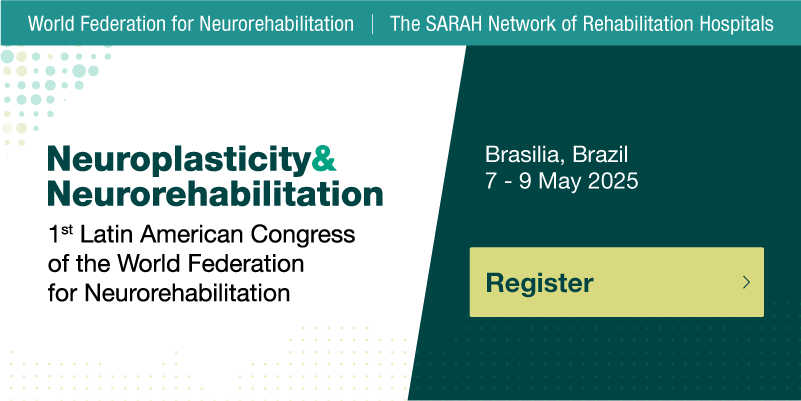The Organizing Committee of the 1st Latin American Congress WFNR: Neuroplasticity and Neurorehabilitation will NEVER SEND MESSAGES to participants offering discounts on airfare, hotel accommodations, ground transportation, or visa procurement services - or discounts of any kind. Communications of this nature DO NOT originate from the Congress Organizers and should be deleted, as they are likely SPAM or phishing schemes. All emails to participants are sent through our official communication channels ONLY: Instagram: @wfnrcongressolatinoamericano; email: wfnr-latinamericancongress@sarah.br
The Organizing Committee of the 1st Latin American Congress WFNR: Neuroplasticity and Neurorehabilitation will NEVER SEND MESSAGES to participants offering discounts on airfare, hotel accommodations, ground transportation, or visa procurement services - or discounts of any kind. Communications of this nature DO NOT originate from the Congress Organizers and should be deleted, as they are likely SPAM or phishing schemes. All emails to participants are sent through our official communication channels ONLY: Instagram: @wfnrcongressolatinoamericano; email: wfnr-latinamericancongress@sarah.br
The World Federation for Neurorehabilitation (WFNR) is organizing an important event in the field of neuroplasticity and neurorehabilitation, which will take place on May 7-9, 2025 in Brasilia, Brazil. It will count on the participation of renowned speakers from five continents who will present their research on the various topics related to neuroplasticity and neurorehabilitation. The Congress will promote interdisciplinary exchanges aimed at deepening knowledge and awareness, improving best practices, and increasing growth across the interdisciplinary range of neuro-affiliated practitioners, students, and researchers. Participants will include neurologists, neuropsychologists, neuroscientists, neuropediatricians, orthopedic surgeons neurosurgeons, physiatrists, pediatricians, speech pathologists, physiotherapists, occupational therapists, psychologists, nurses, nutritionists, educators, music therapists, pharmacologists, social workers, and other professionals interested in neurorehabilitation in Latin America and the world.
This is a rare opportunity to learn directly from some of the best minds in neurorehabilitation today, and to interact with a wide range of professionals working together to improve treatment and conditions for individuals recovering from the gamut of brain injury-related pathologies.
We invite everyone to submit their work and share their research and experience with the global community. Brasilia, the capital of Brazil, awaits you with its architectonic and natural wonders!
Lúcia Willadino Braga, PhD
Volker Hoemberg, MD, Prof.
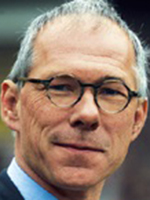
Short Bio
Board Member Bundesverband Neurorehabilitation (Federal organisation for Neurorehabilitation) until 2022
More than 200 original articles in peer-reviewed journals (see publication list)
Journal of Neural Repair
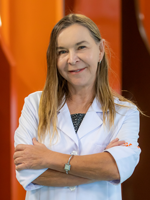
Neuroscience /
Neurorehabilitation
Short Bio
Lucia Willadino Braga is a neuroscientist, researcher, author and clinician experienced in working with children, adolescents, and adults with brain injury. Her focus has been on long-term and context-sensitive ecological rehabilitation, having pioneered programs such as the Family Training Methodology and the MetaCognitive Dimension Programs. Her research uses neuroimaging to explore the impact of neurorehabilitation on neuronal plasticity. Currently, she has been studying the impact that rehabilitation has on patients with long COVID. Dr. Braga is President of the SARAH Network of Rehabilitation Hospitals, a 9-hospital system with over 700 beds that treats over 1,900,000 patients per year. Her awards include a docteur honoris causa from Reims University; the National Order of Scientific Merit bestowed by the president of Brazil; and the Distinguished Career Award from International Neuropsychological Society (INS). She is on the faculty of the University of Massachusetts Medical School’s Psychiatry Department and is engaged in neuroscientific research, often collaborating with European and American institutions. She has published books, book chapters, and numerous scientific articles.
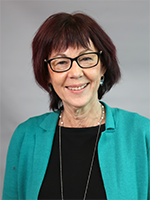
Neuropsychology
Short Bio
Vicki Anderson is Director, Clinical Sciences Research, Murdoch Children’s Research Institute, Professor, Melbourne School of Psychological Science, University of Melbourne, NHMRC Investigator Fellow, and a Director of the Board of the Concussion in Sport group. Her research and clinical interests are in disorders of childhood that impact on the brain, including both developmental and acquired disorders, particularly traumatic brain injury and concussion. Her research takes a multidimensional approach to understanding behavioural consequences of these injuries and the biological mechanisms underpinning them. Her recent work has focussed on translating her early career findings into clinical practice to optimise child outcomes from acquired brain injury. Major translational achievements include: i) publication of the Test of Everyday Attention for Children; ii) development of easily accessed, low burden, e-health approaches to parent-focused psychosocial treatments to maximise child outcomes; iii) development of a novel, comprehensive iPad delivered assessment tool for social competence (PEERs: patent pending); iv) digital health tools for monitoring child post concussion symptoms (endorsed in a partnership with the Australian Football League); and v) co-authorship of the first-ever international paediatric sports concussion guidelines of the International Consensus on Sports Concussion. She has published over 600 peer reviewed papers, 6 books, and has 50M (AUD) in competitive research funds to her credit. She is Associate Editor of the APA journal ‘Neuropsychology’ and the British Psychological Society ‘Journal of Neuropsychology’. She is the First Professor of Clinical Neuropsychology in Australia (2002), and is a Fellow of the Academy of Social Sciences of Australia, the Australian Psychological Society, and founding fellow of the Australian Academy of Health and Medical Scientists. She is a founding board member of the International Paediatric Brain Injury Society, a board member of the International Brain Injury Association, past president of the Australasian Society for the Study of Brain Impairment, and past president of the International Neuropsychological Society.
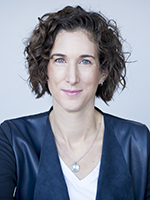
Neuropsychology
Short Bio
Miriam Beauchamp, PhD is a neuropsychologist, Full professor in the Department of Psychology at the Université de Montréal and Head of the Brain & Development Axis at the Sainte-Justine Hospital Azrieli Research Center. She holds the Canada Research Chair in Pediatric Traumatic Brain Injury (TBI). With her research group of 25 members (ABCs Laboratory, https://abcs.umontreal.ca/), she conducts clinical research projects aimed at better understanding the diagnosis, prognosis and consequences of pediatric TBI and concussion, as well as validating intervention and prevention programs. Her research at the crossroads of social neuroscience and neuropsychology also contribute to the development of new assessment and intervention methods in social cognition, including dynamic, immersive technologies such as virtual reality and serious video games. These efforts have led to over 200 publications, numerous knowledge transfer initiatives for the general public, and the validation of several neuropsychological measures.
She is particularly interested in concussions in young children (under the age of 8 years), and in raising public awareness of the unique characteristics and approaches needed for this population through the “Concussion. Communication (COCO)” knowledge mobilization program (coco.umontreal.ca). She also co-leads a strategic initiative called “Lifespan Concussion”, supported by a major infrastructure grant from the Canada Foundation for Innovation. Combining biological monitoring and artificial intelligence, this project collects real-time information on individuals at risk of concussion and improves multidisciplinary management of injured people across all age groups to support intervention.
In 2017, she received the Prix du Québec “Relève scientifique”, the highest distinction awarded by the Quebec government for an early career scientist. She has received Early Career Awards from the International Neuropsychological Society (2015) and the International Brain Injury Association (2017). In 2019, she was named to the Royal Society of Canada's College of New Researchers and Creators in Arts and Science, she was awarded the Quebec-Belgium Research Chair, and received the Expertise & Compétence award at the CHU Sainte-Justine recognition gala. In 2024, she was awarded the Brenda Milner Prize from the Quebec Association of Neuropsychologists (AQNP).
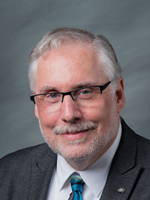
Psychiatry / Neurology
Short Bio
Sheldon Benjamin, MD, DLFAPA, FAAN, FANPA is Professor of Psychiatry and Neurology, Director of Neuropsychiatry, and Vice Chair for Education at University of Massachusetts Medical School, where he was Director of Psychiatry Residency Training for 25 years and founded the combined Neurology/Psychiatry residency program in 1997. Boarded in both Psychiatry and Neurology (ABPN) and Behavioral Neurology/Neuropsychiatry (UCNS), he is Past President of the American Neuropsychiatric Association (ANPA) and the American Association of Directors of Psychiatry Residency Training (AADPRT) and currently serves as a Psychiatry Director of the American Board of Psychiatry and Neurology (ABPN). He has won numerous teaching awards including the University of Massachusetts’ Chancellor’s Medal for Distinguished Teaching as well as ANPA’s Gary J. Tucker Lifetime Achievement Award in Neuropsychiatry.
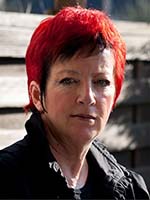
Neurology
Short Bio
German neurologist with over 30 years of expertise in the field of neurorehabilitation, for the most part working as Assistant Medical Director under the leadership of Professor Volker Hömberg, across two different clinics. The main fields of interest are early rehabilitation, with emphasis on disorders of consciousness, and the management in the subacute phase after severe TBI, as well as spasticity management. A constant issue was recovery after stroke, focusing on a specific concept of impairment-oriented training, as well as the assessment and management of motivational disorders after acquired brain injury. Research work with the Neurological Department of the University of Essen focused on the role of the cerebellum in motor recovery after stroke, and with the Coma Science Group in Liege, Belgium, on the assessment of nociception in patients with disorders of consciousness. Currently working as Secretary General of the European Federation for Neurorehabilitation and Chair of the Special Interest Group on Motivation in Neurorehabilitation of the World Federation of NeuroRehabilitation (WFNR).
Neurorehabilitation
Short Bio
Dolores Claros-Salinas been active in neurorehabilitation since 1984. Her past positions include Neurolinguist (Department of Neuropsychology, Municipal Hospital Munich-Bogenhausen); and then was Head of neurological vocational therapy, Kliniken Schmieder Konstanz; and Head of neurological vocational therapy, Kliniken Schmieder Allensbach, Gailingen, Konstanz, Stuttgart and Heidelberg. Dr. Claros-Salinas’s main neurorehabilitative focus areas are: vocational neurorehabilitation, attention and fatigue, complex language processing (text comprehension and text production), acalculia - diagnosis and treatment of number processing and arithmetic disorders, functional imaging (fMRI) on brain plasticity after training of arithmetic functions. Her scientific activities, research, and teaching include: Research project “European Standardized Computerized Assessment Procedure for the Evaluation and Rehabilitation of Brain-Damaged Patients” / Project manager: Prof. Dr. G. Deloche (1990-1997); Project management (German Research Foundation) together with Prof. Dr. K. Willmes–von Hinckeldey and Prof. Dr. Dr. H.-O. Karnath: “Symptom-oriented voxel-based statistical lesion analysis in aphasia and acalculia” (2010 – 2013); Project management together with Dr. M. Streibelt, German Pension Insurance, Berlin: “Validation of the screening instrument SIMBO-C for neurological diseases” (2014 – 2015).
Since 2022 , she has been the scientific expert of the research project “Needs-focused participation in working life for patients with acquired brain damage”, German Pension Insurance, Berlin. She was a member of the editorial team of “Aphasie und verwandte Gebiete” published by aphasie suisse, Switzerland (2005 – 2018); Board member of the Lurija Institute for Rehabilitation Sciences and Health Research at the University of Konstanz, Germany (2003 – 2017). Dr. Claros-Salinas teaches at the Danube University Krems, Austria and the University of Konstanz, Germany. She has given talks at scientific conferences in Germany, Austria, Brazil, Columbia, France, Italy, Liechtenstein, Netherlands, Portugal, Switzerland. Her publications include books and journals; recent book release: Claros-Salinas, D. (2023). Berufliche Teilhabe und Wiedereingliederung in der Neurorehabilitation (Vol. 25). Hogrefe Verlag.
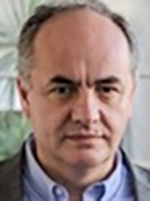
Neuropsychology
Short Bio
Ariel Cuadro has a Bachelors degree in Psychology, is a specialist in Learning Difficulties, has a Masters in Educational Psychology and a PhD in Psychology (University of Murcia-Spain) and postdoctoral studies (University of Granada-Spain). He is Dean of the Faculty of Psychology (2005-2009) and Academic Vice Rector (2009-2017) of the Catholic University of Uruguay; a Level II Member of the National System of Researchers; Director of the Department of Neuroscience and Learning. Dr. Cuadro is responsible for the doctoral programs at the Catholic University of Uruguay and is the Masters and Doctoral thesis director. He is President of the Latin American Society of Neuropsychology, Vice President of the Uruguayan Society of Neuropsychology, Vice President of the Uruguayan Society of Neuropsychology. He was previously the Specialist Consultant for UNESCO and the Organization of Ibero-American States (OEI) for the study of written language programs. In addition, he developed and implemented training programs for UNICEF and the National Public Education Administration (ANEP). He serves as a reviewer of academic journals of the specialty; is a University accreditor of Colombia, Bolivia, Chile, Peru and Paraguay, and has developed assessment techniques and intervention programs in the written language that have been published and are used in educational centers in the country and the region. Dr. Cuadro has published numerous academic articles, book chapters, and books.
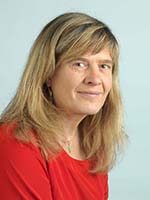
Pediatrics / Cognition
Short Bio
Ghislaine Dehaene-Lambertz is a pediatrician by training, and is a full-time research associate at CNRS, Université Paris-Saclay, France, where she studies the development of cognitive functions in children using brain imaging techniques. She is director of the developmental brain imaging program at Neurospin, Saclay, an imaging center dedicated to brain research near Paris. She has published pioneering work using high-density event-related potentials (Nature 1994), functional resonance magnetic imaging (Science 2002) or optical topography (PNAS 2003) to study language acquisition. The aim of her research is to study the brain functional organization at the beginning of life to understand how complex cognitive functions, such as language, music, mathematics, consciousness, etc… emerge in the human brain, and also study how school education builds on this pre-existing organization but also transforms it, to enable reading for example. She has received several awards in France and is a member of the US National Academy of Sciences. With colleagues, she has published a book on language for a general audience “La plus belle histoire du langage”, and a book for general practitioners on how to understand and monitor children developmental disorders in primary care « Les troubles dys avant 7 ans : Les clés pour comprendre et assurer le suivi en médecine de ville ». She has been a spokesperson on early development for French national magazines, newspapers, radio and television.
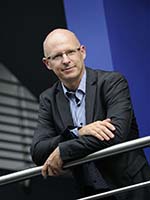
Psychology / Cognitive Neuroscience
Short Bio
Stanislas Dehaene is a French psychologist and cognitive neuroscientist. He holds the Chair of Experimental Cognitive Psychology at the Collége de France in Paris, and directs the NeuroSpin center in Saclay, south of Paris, France's advanced brain imaging research center. Stanislas Dehaene is recognized as one of Europe’s most prominent brain scientists. He is well known for his pioneering studies of “the number sense”, the innate brain circuits that we share with other primates and that allow us to understand numbers and mathematics. His research investigates the neural bases of human cognitive functions such as reading, calculation and language, with a particular interest for the differences between conscious and non-conscious processing, and for the impact of education on the brain. Prof. Dehaene is a member of nine international academies and a recipient of the Brain Prize. In 2018, he became the president of the newly created French Scientific Council for Education, which advises the French government on scientific approaches to learning and teaching. He is the author of multiple books including Reading in the Brain: The Science and Evolution of a Human Invention (2009), How We Learn: Why Brains Learn Better Than Any Machine…For Now (2020), and Seeing the Mind (2023). His books have been translated into more than fifteen languages.
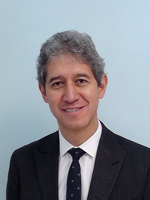
Neurology / Neurosurgery
Short Bio
Jorge Hernandez Franco is a Specialist in rehabilitation medicine. Graduated medical doctor at the national University Mexico 1985. Graduated in the specialty in rehabilitation medicine at the National University in Mexico 1989. Certified in neurological rehabilitation, the University of Newcastle upon Tyne U.K. in 1999. Head of the rehabilitation department at the National Neurology and Neurosurgery Institute M.V.S. in Mexico City since 1991. Professor of the postgraduate course in neurological rehabilitation for neurologists and specialists in rehabilitation medicine at the National Neurology and Neurosurgery Institute and National University in Mexico since 2002. Vice-president for Mexico, Central America and the Caribbean of The World Federation for Neurorehabilitation (WFNR) 1997. President of the newly found Latin-American Neurorehabilitation Association 2017.
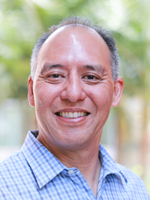
Neurology
Mini Bio
Dr. Giza graduated from Dartmouth College, received his M.D. from West Virginia University and completed Adult and Pediatric Neurology training at UCLA. He worked on the Yosemite Search and Rescue team before joining the UCLA Brain Injury Research Center. He served as Vice-Chief of the California State Athletic Commission, and as an advisor for the U.S. Department of Defense, traveling to Afghanistan in 2011. He founded and directs the UCLA Steve Tisch BrainSPORT & Operation Mend BRAIN TBI programs. He co-authored concussion/mild TBI guidelines for AAN (2013), CDC (2018) and the Concussion in Sport Group (2017, 2023). He serves on concussion advisory committees for Major League Soccer (MLS), the National Basketball Association (NBA) and the US Soccer Federation (USSF). He is a clinical consultant for MLS/USSF, NHL/NHLPA, NBA, the LA Lakers, the Los Angeles Chargers and NFL. Dr. Giza is the Rubin Brown Professor and Chief of Pediatric Neurology at UCLA Mattel Children’s Hospital.
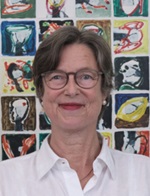
Neuropediatrics
Short Bio
Priv.-Doz. Dr. med. Kristina Müller, 11.06.1957, Kiel
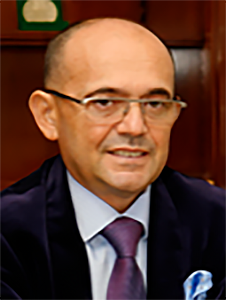
Neurology
Short Bio
Professor of Neurology, Senior Neurologist, Chairman of the Neurosciences Department, Faculty of Medicine, Iuliu Hatieganu University of Medicine and Pharmacy Cluj-Napoca, President of the European Federation of Neurorehabilitation Societies (EFNR), Chariman of the EAN Communication Committee and EAN Board Member, Co-Chair EAN Scientific Panel Neurotraumatology, Past President of the Romanian Society of Neurology, President of the Society for the Study of Neuroprotection and Neuroplasticity (SSNN), Member of the Romanian Academy, Member of the Academy of Medical Sciences, Romania, secretary of its Cluj Branch. He is member of 17 scientific international societies (being Member of the American Neurological Association (ANA) - Fellow of ANA (FANA) since 2012) and 10 national ones, being part of the executive board of most of these societies. Professor Dafin F. Mureșanu is a specialist in Leadership and Management of Research and Health Care Systems (specialization in Management and Leadership, Arthur Anderson Institute, Illinois, USA, 1998 and several international courses and training stages in Neurology, research, 101 management and leadership). Professor Dafin F. Mureșanu is coordinator in international educational programs of European Master (i.e. European Master in Stroke Medicine, University of Krems), organizer and coorganizer of many educational projects: European and international schools and courses (International School of Neurology, European Stroke Organisation summer School, Danubian Neurological Society Teaching Courses, Seminars - Department of Neurosciences, European Teaching Courses on Neurorehabilitation) and scientific events: congresses, conferences, symposia (International Congresses of the Society for the Study of Neuroprotection and Neuroplasticity (SSNN), International Association of Neurorestoratology (IANR) & Global College for Neuroprotection and Neuroregeneration (GCNN) Conferences, Vascular Dementia Congresses (VaD), World Congresses on Controversies in Neurology (CONy), Danube Society Neurology Congresses, World Academy for Multidisciplinary Neurotraumatolgy (AMN) Congresses, Congresses of European Society for Clinical Neuropharmacology, European Congresses of Neurorehabilitation). His activity includes involvement in many national and international clinical studies and research projects, over 400 scientific participations as “invited speaker” in national and international scientific events, a significant portfolio of scientific articles (209 papers indexed on Web of Science-ISI, H-index: 22) as well as contributions in monographs and books published by prestigious international publishing houses. Prof. Dr. Dafin F. Mureșanu has been honoured with: ”Dimitrie Cantemir” Medal of the Academy of The Republic of Moldova in 2018, Ana Aslan Award 2018 - “Performance in the study of active aging and neuroscience”, for the contribution to the development of Romanian medicine, National Order “Faithful Service” awarded by the President of Romania in 2017; Iuliu Hatieganu University of Medicine and Pharmacy Cluj-Napoca, Faculty of Medicine, the “Iuliu Hatieganu Great Award 2016” for the best educational project in the last five years; the Academy of Romanian Scientists, “Carol Davila Award for Medical Sciences / 2011”, for the contribution to the Neurosurgery book “Tratat de Neurochirurgie” (vol.2), Editura Medicala, Bucuresti, 2011; the Faculty of Medicine, Iuliu Hatieganu University of Medicine and Pharmacy Cluj-Napoca “Octavian Fodor Award” for the best scientific activity of the year 2010 and the 2009 Romanian Academy “Gheorghe Marinescu Award” for advanced contributions in Neuroprotection and Neuroplasticity.
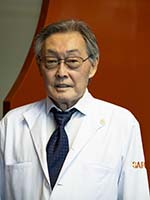
Orthopedics
Short Bio
Alvaro Massao Nomura is an orthopedic surgeon and Vice President of the SARAH Network of Rehabilitation Hospitals, a 700-bed, 9-hospital healthcare and rehabilitation system that treats over 1,900,000 patients annually. In addition, he is its surgeon-in-chief and coordinates the activities of 73 surgeons. His training began in 1976 at the SARAH Network and included specializations in pediatric orthopedics at Oxford University (UK); movement disorders at the Motion Laboratory of the University of California in San Diego (USA); congenital clubfoot at the University of Iowa (USA); and scoliosis surgery at Harvard University (USA). Dr. Nomura treats and conducts life-long follow-up of patients with cerebral palsy, and has been training professionals in the field of orthopedics and other areas of rehabilitation for 44 years. He has written book chapters and scientific articles in several international journals.
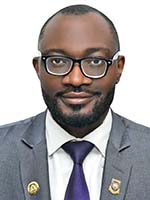
Neurology
Short Bio
Mayowa Ojo Owolabi is a renowned Professor of Neurology, and Director, Center for Genomic and Precision Medicine, University of Ibadan.
He is an eminent scholar with a stroke phenotyping software patent >400 publications in peer-reviewed journals including The Lancet, and Nature, with >135,000 citations and a Google Scholar h-index of 87. Prof. Owolabi is a recognized global leader in medicine, neurology, cardiovascular diseases, neuro-rehabilitation, global health, brain health, community-based genomic epidemiology of stroke in Africa, clinical trials and implementation science.
Prof. Owolabi is an outstanding scientist with several inventions and innovations including ‘stroke quadrangle’ and ‘brain quadrangle’, which are accepted globally as key ingredients driving the global interventions against stroke and for promoting brain health in Africa and beyond.
He is among the global top 2% scientists (2023) and the winner of the 2021 World Stroke Organization Global Award for Outstanding Contributions to Clinical Stroke Research. He is a foremost leader in the global fight against stroke and a frontline leader in the fight against hypertension, stroke and non-communicable diseases in Africa.. He is associate editor of Stroke journal and several other top tier Neurology journals. He leads the largest stroke study in Africa as principal investigator of several grants and co-investigator in including Stroke Investigative Research & Educational Network (SIREN) grant (with the largest neurobiobank in Africa >170,000 samples) from National Institutes of Health (NIH), USA; Systematic Investigation of Blacks with Stroke using Genomics (SIBS Genomics) R01NS107900. He pioneered the establishment of the fisrt multi-disciplinary neurorehabilitation Center in East, West and Central Africa.
He is a member of the Presidium and the pioneer Regional Vice-President, World Federation of Neurorehabilitation (Africa); member Board of Directors, World Stroke Organization; African Regional Director, World Hypertension League; Lead Co-Chair, WSO- Lancet Commission on stroke. He is foundation co-chair of the steering committee of African Stroke Organization; and Member/Rapporteur of the WHO Technical Action Group on NCD (Research and Innovation). He is co-Lead of the African Research Universities Alliance- The Guild Universities Cluster of Excellence for non-communicable diseases. He is a Fellow of the American Academy of Neurology, American Heart Association, Royal College of Physicians, Academy of Medical Specialties, Nigerian Academy of Science, African Academy of Science and Atria Academy of Science and Medicine (USA).
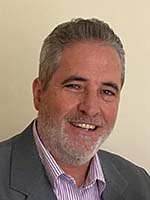
Neuropsychology
Short Bio
He graduated as a medical doctor in 1993 and as a clinical neurophysiologist in 1997. He worked at the Cuban Neuroscience Centre and different University Hospitals in Cuba and Colombia. During his clinical work, he focused on neurophysiological aspects of dementia syndromes and other neurological disorders. He has been teaching neuroscience-related subjects in medicine and psychology. His motivation for teaching and research led him to a significant career change into academia via a European Scholarship from the ALBAN programme. This started with a PhD in Human Cognitive Neuroscience at the University of Edinburgh from 2005-2009 and continued with three Personal Postdoctoral Fellowships at the University of Edinburgh. He was appointed as an Assistant Professor in Psychology at Heriot-Watt University from 2015 to 2018.
In 2018, he was appointed as a professor of psychology at the University of Strathclyde, Department of Psychological Sciences and Health, where he leads the Applied Cognition Lab and shortly the Department (from 01/08/2024). His Lab connects a broad international network. He leads major international networks such as the Latin American and Caribbean Consortium on Dementia and the EuroLAD-EEG Consortium, the first global platform to enhance EEG methods for dementia in research and clinical contexts. He is a member of the Executive Committee of the Scottish Dementia Research Consortium, where he leads the Informatics and Technology theme. He has made significant contributions to the development of neurocognitive biomarkers for the early detection of Alzheimer’s disease. He has contributed more than 150 publications to high-impact journals (H-index of 30) and received prestigious awards such as the Outstanding Contributions to Dementia Research by Alzheimer’s Society UK and the Arthur Benton mid-career award by the International Neuropsychological Society.
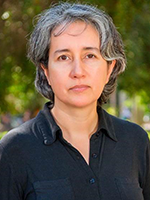
Neuropediatrics
Short Bio
Marcela Peña is a pediatrician and has obtained her PhD in Cognitive Science and Psycholinguistics from the École des Hautes Études en Sciences Sociales in Paris, France. Presently, she holds the position of Full Professor at the School of Psychology at the Pontificia Universidad Catolica de Chile, where she leads the Laboratory of Cognitive Neuroscience. Additionally, Dr. Peña serves as the Scientific Director at the National Center of Artificial Intelligence in Chile.
Dr. Peña has been affiliated to several multidisciplinary initiatives aimed at protecting and promoting learning skills when children develop in adverse contexts. For instance, she is member of the UNESCO Chair of Science for Education, entitled "Building a Bridge between Laboratory and Classroom," operating under the leadership of Professor Roberto Lent in Brazil, she contributes as an invited researcher within the J-Pal network, and she is an active member of the UBC Language Sciences group in Canada.
Dr. Peña's research is centered on early cognitive development and early learning, employing a multidisciplinary approach that integrates behavioral and neuroimaging techniques. Her investigations delve into how infants and young children, both typically developing and with atypical development, acquire language, learn from their environment, and develop foundational cognitive skills crucial for their education and well-being.
More recently, Dr. Peña and her team have been engaged in designing tablet-based interventions aimed at promoting linguistic and communicative abilities among preschool-aged children, as innovative tools to support the activity of early childhood educators.
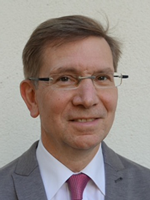
Neurology / Neurorehabilitation
Short Bio
Thomas Platz was educated at the medical school in Heidelberg/Mannheim, Germany, and in 1988 at the Duke University Medical Center, Durham, NC, USA, received his Dr. med. degree in 1990. He started his residency in neurology in Berlin, Germany, in 1989. In 1995, he received the Feodor-Lynen Fellowship (AvH foundation) to stay at the National Hospital and Institute of Neurology, Queen Square, London, UK. In 1997, he received a Dipl. in epidem. and biostats from the McGill University, Montreal, QC, Canada, and became board certified Neurologist and Clinical Geriatrist in Berlin, Germany. In 2002, he received his habilitation degree (Dr. med. habil.) in neurorehabilitation at the Charité Berlin, Germany. In 2006, he became the Head of Department for neurohabilitation at the BDH Klinik Greifswald, Germany. Since 2009, he had been acting as a Medical Director of that hospital and as Head of the Department of both its Neurorehabilitation Centre and Spinal Cord Injury Unit, and received a personal professorship for neurorehabilitation at the University Greifswald. Since 10.2018 he acts as Medical Director Research at the BDH Klinik Greifswald and Head, Institute for Neurorehabilitation and Evidence-based Practice ("An-Institut"), University of Greifswald; in addition, he leads the neurorehabilitation research group at the University Medical Centre Greifswald. He is Past-President of the German society for neurorehabilitation (DGNR), and head of its Practice Guideline and Research Committees. Specialty Chief Editor in Neurorehabilitation for Frontiers in Neurology. For the World Federation for NeuroRehabilitation (WFNR) he acts as head of the Education Committee and head of the Special Interest Group Clinical Pathways; in addition, he is liaison person for the WFNR-Cochrane Rehabilitation collaboration.
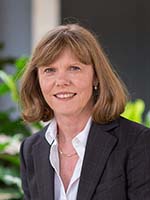
Neuropsychology
Short Bio
Jenny Ponsford is Professor of Neuropsychology in the School of Psychological Sciences at Monash University, where she established and directed the doctoral training program in Clinical Neuropsychology 2000-2019. She is Director of the Monash-Epworth Rehabilitation Research Centre at Epworth Healthcare. Over 42 years she has conducted clinical work and research with individuals with traumatic brain injury (TBI), investigating outcomes and the efficacy of rehabilitative interventions, with over 500 publications, including two books. She is Past-President of the International Neuropsychological Society (INS), International Association for Study of TBI and Australasian Society for the Study of Brain Impairment. She has received the Robert Moody prize for Distinguished Initiatives in Brain Injury and Rehabilitation (2013), INS Paul Satz Career Mentoring Award (2015), IBIA Jennett Plum Award for Outstanding Clinical Achievement in Brain Injury Medicine (2023) and in 2017 was made Officer of the Order of Australia for distinguished contributions to neuropsychology and diagnosis, treatment and rehabilitation of TBI. In 2020, 2022 and 2023 The Australian’ named her as Australia’s leading researcher in the field of Rehabilitation Therapy. She serves on editorial boards of seven journals and is an Associate Editor of Journal of the International Neuropsychological Society.
Neurosurgery
Short Bio
Mariano Socolovsky is Chief of Division of Neurosurgery, Hospital de Clínicas, University of Buenos Aires School of Medicine. He is also Head Professor of Neurosurgery, University of Buenos Aires School of Medicine; Chairman, Peripheral Nerve Committee, World Federation of Neurosurgical Societies; and President (2022-2024) of the Argentine Association of Neurosurgery.
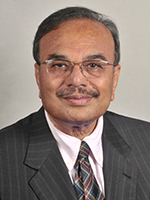
Neurology / Neurorehabilitation
Short Bio
Nirmal Suruya is Chairman, Surya Neuro Center; founder Trustee & Chairman of the Epilepsy Foundation in India; Fellow of the Indian Academy of Neurology; Member of the Academy of Medical Sciences; Fellow of the American Academy of Neurology; President of the Indian Federation of Neuro - Rehabilitation (IFNR); Regional Vice Presidentof the World Federation NeuroRehabilitation (WFNR); Past President of the Indian Academy of Neurology (IAN); President Elect: Indian Stroke Association (ISA); Chair of the Developing World Forum SIG; WFNR President- Indian Federation of Neuro-Rehabilitation (IFNR); President, Asian Ocenian Society of Neurorehabilitation (AOSNR); Chair, Telemedicine Academy Indian Confederation For Healthcare Accreditation (ICHA); Member at Large, Presidium, WFNR; Member, Digital Strategy Subcommittee (DSS), American Academy of Neurology (AAN 2021-2-23); President, WCNR2018, Mumbai; Treasurer, Indian Academy of Neurology (IAN) 2014-20; Executive Member, Indian Stroke Association (2018-2021); Past President- Bombay Neurosciences Association; Past President, Maharastra Asoociation of Neurology. His special acheivements include: Ashwini Sahakari Rugnalaya Ani Sanshodhan Kendra Niyamit Inauguration of “Neuro Rehabilitation Centre” as Chief Guest on 30th July 2023 at Solapur; “Eighth IEA Oration in Epileptology 2023” Conference organized by Sri Venkateshwara Institute of Medical Sciences on 01st June 2023 at Tirupati; Guest of Honour, Installation Ceremoney of Nagpur Epilepsy AssociationNov 2023 followed by oration. He is also the President Elect of the Indian Stroke Association
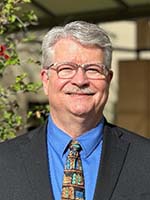
Neurology
Short Bio
Dr. Smith is Associate Professor of Neurology at the Mayo Clinic College of Medicine and Science, Scottsdale, Arizona. He is the Director of the Sensory Laboratory and a Consultant for the Department of Neurology at the Mayo Clinic. He is certified by the ABPN in Neurology, Clinical Neurophysiology and Neuromuscular Medicine, and participates in continuing certification. He also is certified by the American Board of Electrodiagnostic Medicine. He chairs the American Academy of Neurology Members Research Subcommittee. As an American Board of Psychiatry and Neurology (ABPN) Director, Dr. Smith serves on the Neurology Council and many other ABPN committees, chairing the General Neurology Initial Certification Committee.
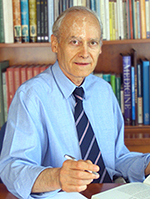
Neuropsychology
Mini Bio
Josep M. Vendrell i Brucet is a Neurologist, who for many years (1983-2020) headed the Neuropsychology Division of the Neurology Department at the Hospital de la Santa Creu i Sant Pau in Barcelona, Spain, and served as a Founding Director of its Llenguatge School of Pathology (1976). He was previously Professor of Anatomy of the Nervous System (1978-1986) and Professor of Neurology (Department of Medicine, 1986-2014) at the Autonomous University of Barcelona. Currently, he is Director and Head of Research of the Euglia Cognitive Telemedicine Project (2002-) for the stimulation and rehabilitation of higher brain functions.
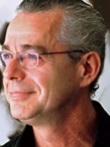
Neurology
Short Bio
Born in 1952, Professor Vester specialized in Veterinary Medicine between 1971 and 1974 at the University in Munich, then changed to the University in Cologne in 1974 and specialized in Human Medicine from 1974 to 1980. From 1976 to 1979, he additionally completed the curriculum on biostatistics for pharmacology and clinical research at the Institute for Data Analysis and Study Planning in Munich. While studying human medicine, he completed research work on pattern recognition in the visual brain and developed a pharmacodynamic Neuron Simulation Model at the Institute for Medical Documentation and Statistics of the University at Cologne. Since 1982 he holds > 100 advanced training courses on biometry for professionals in clinical research as well as teaching courses for universitary institutions and international societies. From 1985 to 1995, he was a member of the Ultrahigh Dexamethasone Head Injury Study Group and the leading biometrician of the German GUDHIS trial in Traumatic Brain Injury. Since 1995 he is Senior Consultant for Biometry & Clinical Research at the Institute for Data Analysis and Study Planning (IDV). He planned and evaluated about 150 randomized clinical studies worldwide and is member of various international Advisory Boards and Steering Committees including participation as biometric expert in regulatory authority panels, in FDA, EMA, and BfArM hearings, and in workshops of the International Biometric Society (IBS). He conducted Statistical peer reviewer for leading medical journals such as Stroke (American Heart Association). Since 2013 Professor Vester has been a Statistical Expert and Elected Member of the International Scientific Committee of the Society for the Study of Neuroprotection and Neuroplasticity (SSNN). He is a Statistical Expert and Elected Member of the World Academy for Multidisciplinary Neurotraumatology (AMN) since 2013 and President of the AMN since 2018. Professor Vester is a Member of the PhD Neuroscience International Faculty and an Invited Associate Professor in the Department of Neuroscience at Iuliu Hatieganu University of Medicine and Pharmacy in Cluj-Napoca, Romania. Since 2018 he is the Co-Chair EAN Guideline Task Force Neurorehabilitation and Head Biometry & Clinical Research at the Institute for Data Analysis and Study Planning (IDV).
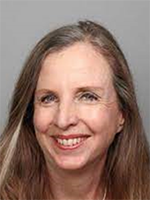
Pediatric Rehabilitation
Short Bio
Shari Wade is a tenured professor of Pediatrics at the University of Cincinnati and director of research in the Division of Pediatric Rehabilitation Medicine at Cincinnati Children’s Hospital Medical Center. Since 1991, she has conducted federally-funded research examining factors influencing recovery following traumatic brain injury. She pioneered the development and testing of technology-based interventions to reduce the behavioral and family consequences of TBI and other neurological conditions, as described in over 300 peer-reviewed publications. Currently, she is implementing the Teen Online Problem Solving program, identified as a practice standard in recent evidence-based guidelines, at 15 sites in the United States and Canada. With partners across the world, she has worked to identify pathways to integrating evidence-based programs into community care.
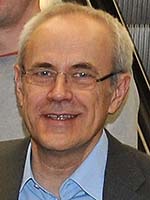
Neuropsychology
Short Bio
Klaus Willmes (born 1950) is a retired full professor of psychology, whose research centers on a number of topics, including numerical cognition and its disorders, assessment and treatment of aphasic language disorders and other neuropsychological disorders, as well as psychometric and statistical single-case analysis procedures in neuropsychology. As of 1997 until retirement in 2016, he was nominated professor of neuropsychology at the Department of Neurology, RWTH Aachen University, Germany and from 2014-2016 also director of the Center for Sign Language and Gesture (SignGes).
Willmes was awarded the Alfred Binet prize for the advancement of psychological diagnostics from the German Society for Psychology in 2005 for his work on the Aachen Aphasia Test (AAT).
Willmes studied mathematics and psychology at the RWTH Aachen University from 1969 to 1979 obtaining master degrees (diplomas) in both fields. He turned to neuropsychology to work and do research in the interdisciplinary neurolinguistic and neuropsychological working group (headed by Klaus Poeck) until 1996. Willmes completed his PhD in Psychology in 1987 with Jürgen Bredenkamp at the University of Trier and got his habilitation from the University of Bielefeld in 1994.
Willmes has published over 300 research papers, over 50 book chapters, 11 test procedures and 1 book on single-case diagnostics (in German with Bruno Fimm). He had many funded projects among others from the EU, the German Research Society and the German Ministry for Education and Research. Willmes was a member of the editorial board of several journals, including Aphasiology, European Journal of Neuropsychology, Neuropsychologia, Neuropsychological Rehabilitation.
His collaboration with SARAH dates back more than 25 years.
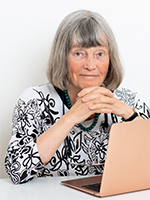
Neuropsychology
Short Bio
Barbara Wilson is a clinical neuropsychologist who has worked in brain injury rehabilitation for 45 years. She has published 35 books, 204 peer reviewed papers, 125 chapters and 8 neuropsychological tests. She has won many awards for her work including an OBE from the Queen in 1998, for services to rehabilitation; five lifetime achievement awards, including one from the NHS 70 year anniversary parliamentary awards where she was regional champion for the Midlands and East Region. In 2011 she received the Ramon Y Cahal award from the International Neuropsychiatric Association. In 2014 she received an honorary degree from The University of Cordoba, Argentina. Also in 2014 she received the M.B. Shapiro award from The Division of Clinical Psychology (affiliated to The British Psychological Society) for Distinguished Contributions to Clinical Psychology. In 2019 she received the annual award from the Spanish Clinical Neuropsychological Society. For many years she was editor of the journal “Neuropsychological Rehabilitation” which she founded in 1991 and in 1996 she established the Oliver Zangwill Centre for Neuropsychological Rehabilitation. A rehabilitation centre in Quito, Ecuador is named after her. The Division of Neuropsychology named a prize after her, the ‘Barbara Wilson prize for distinguished contributions to neuropsychology’. She is a Fellow of The British Psychological Society, The Academy of Medical Sciences and The Academy of Social Sciences. She is honorary professor at the Universities of Hong Kong, Sydney, East Anglia and Fernando Pessoa University, Porto, Portugal. She has held 30 research grants. Her work has resulted in changes in clinical practice. For example, as a result of a randomised control trial evaluating a paging system to improve the everyday functioning of people with memory and planning problems, the local health authority set this up as a health care system for people throughout the United Kingdom.
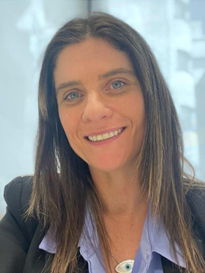
Neuropsychology
Short Bio
Undergraduate degree in Psychology and a Master's and Doctoratal degrees in Medicine and Health Sciences from the Pontifical Catholic University of Rio Grande do Sul. Post-doctorate from the Postgraduate Program in Medicine/Pediatrics and Child Health at PUCRS. Currently a clinician at Hospital São Lucas PUCRS and a Clinical Neuropsychologist at the PUCRS Clinical Center as well as the Specialized Center for Child Neurodevelopment (CENI) at Hospital Moinhos de Vento. Collaborating researcher at the Brain Institute of Rio Grande do Sul (InsCer) and Insight Biomedical Trials. Experienced in the field of neuropsychology, with a focus on: neuropsychological assessment, assessment of neuropsychomotor development, ASD, ADHD, epilepsy, multiple sclerosis, and dementia.
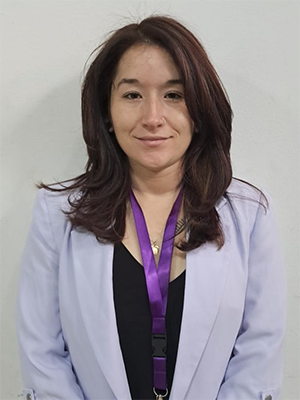
Kinesiology
Short Bio
Bachelor’s degree (2019) in kinesiology and Master’s degree (2024) in Neuroscience, both from the University of Chile. Currently combines clinical work, teaching and research in the area of neurorehabilitation, with primary focus on the integration of innovative therapies and new technologies to enhance sensorimotor recovery in people affected by neurological pathologies that cause movement disorders, especially in the context of stroke.
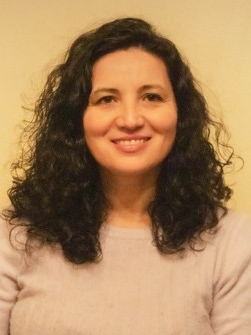
Kinesiology
Mini Bio
• Kinesiologist, University of La Frontera. Chili.
• Bachelor’s Degree in Kinesiology from the University of Chile.
• Master’s Degree in Neuroscience from the Austral University of Chile.
• Specialist in Neurokinesiology, accredited by the Chilean College of Kinesiologists.
• Bobath therapist for adult neurological patients, IBITA.
• Director and Founder of the Equine Therapy Program at the Austral University.
• Member of the Animate Foundation for Animal-Assisted Therapy.
• Member of the Scientific Committee of the Latin American Network of Neurorehabilitation.
• Professor, Adult and Pediatric Neurorehabilitation.
• Clinical Professor, Adult and Pediatric Neurorehabilitation, Austral University of Chile; University of San Sebastián; and University of Santo Tomás.
• Researcher in areas such as adult and pediatric neurorehabilitation and neurorehabilitation technologies.
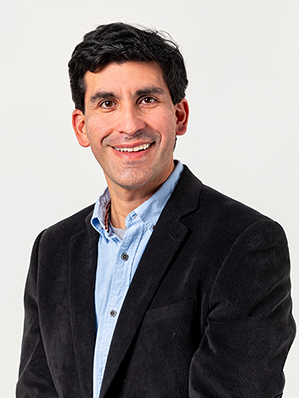
Physiotherapy / Neuroscience
Short Bio
• Physical Therapist (PT).
• PhD in Biomedical Science (Neuroscience)
• Postdoc, University of Oregon, Motor Control Lab, PI, Dr. Marjorie Woollacott.
• Professor, 2011 – 2024, Universidad de Chile. Department of Physical Therapy and Department of Neuroscience.
• 2017 - Present, independent research with several grants in Chile, about motor learning applied to neurorehabilitation, balance telerehabilitation, exoskeleton for upper limb recovery after stroke, artificial intelligence for gait assessment, and early detection of cerebral palsy using motion sensors.
• 2023 - Present. Senior Research Associate, Balance Disorder Lab (Fay Horak, Martina Mancini), Department of Neurology, Oregon Health & Science University, Portland ,Oregon, USA.
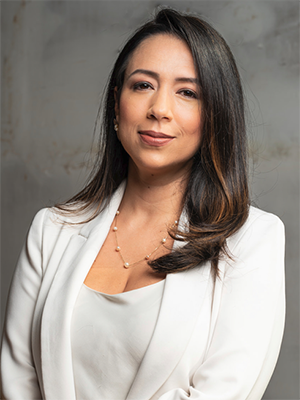
Neurology
Short Bio
Neurologist at IAMSPE, Specialist in Movement Disorders, Deep Brain Stimulation (DBS), Neurological Botulinum Toxin at Hospital das Clínicas da FMUSP. Specialist in Headaches at Unifesp. Adjunct Faculty at Mayo Clinic - Jacksonville - USA. Full Member ABN, member of the Movement Disorders Society (MDS), Brazilian Headache Society (SBCe), and International Neurotoxin Association (INA).
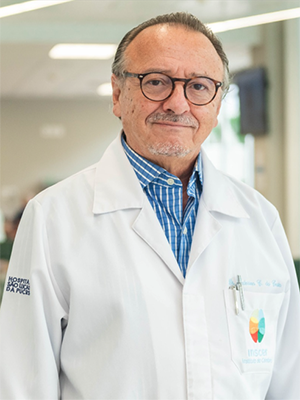
Neurology
Short Bio
Physician and neurologist, with a Master's degree in Biological Sciences - Physiology and in Neuroscience, and a PhD in Biological Sciences - Physiology from UFRGS; Research Fellow in Neurology - Clinical Neurophysiology, from Harvard Medical School. Full Professor of Neurology in the undergraduate and graduate programs in Medicine and Health Sciences, Pediatrics and Child Health and Biomedical Gerontology at the Pontifical Catholic University of Rio Grande do Sul (PUCRS) School of Medicine. Creator and founder of the Brain Institute of Rio Grande do Sul (InsCer); Vice-Rector of PUCRS from December 9, 2016 to December 8, 2020 (https://www.pucrs.br). Adjunct Associate Professor at the University of Miami in the Latin American Student and Teacher Training Program and a 1st Researcher at the National Council for Scientific and Technological Development (http://lattes.cnpq.br/996220415">http://lattes.cnpq.br/9962204158580009; ORCID 0000-0001-6776-1515). He is currently Director of the Brain Institute (https://inscer.pucrs.br/br/).
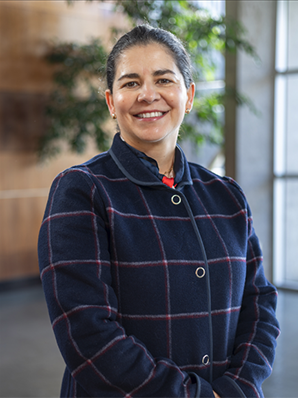
Physiotherapy
Short Bio
• Physical therapist.
• Masters degree in Human Motor Skills.
• Ph.D. in Human Motor Skills.
• Adjunct Professor, Department of Rehabilitation Sciences - Universidad de La Frontera Chile.
• President of the Neuroaraucania Network of Chile.
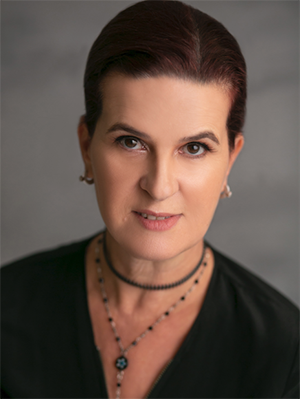
Sports science
Short Bio
Associate Professor of Undergraduate Program in Dance and the Postgraduate Program in Movement Sciences at the School of Physical Education, Physiotherapy and Dance at the Federal University of Rio Grande do Sul (UFRGS), Brazil. Senior Atlantic Fellow for Equity in Brain Health, Trinity College Dublin, Ireland. She completed a postdoctoral degree in “Dance Science” at the University of Wolverhampton, United Kingdom. Coordinator of the “Group for Research in Art, Body and Education (GRACE)” and the Brazil/United Kingdom Network in the area of Medicine and Science of Dance, developing research in into “dance and health”, with a focus on Parkinson's Disease and aging.
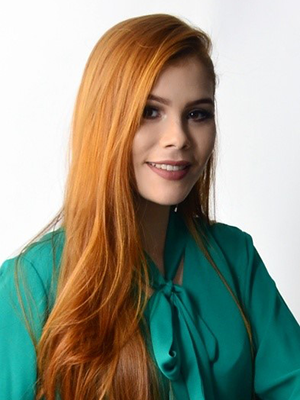
Physiotherapy
Short Bio
Physical therapist, PhD student in Physiotherapy at the Federal University of Rio Grande do Norte (UFRN) currently working in the area of Cardiorespiratory Physiotherapy. Master's degree in Assessment and Intervention in Cardiorespiratory Physiotherapy (UFRN) and specializations in Cardiorespiratory Physiotherapy (UFRN) and Physical Therapy in Intensive Care Units (UNIFIP). Researcher in neuromodulation applied to Amyotrophic Lateral Sclerosis (ALS) and member of the Neuromuscular Diseases Outpatient Clinic at Onofre Lopes University Hospital. Clinical and academic experience in cardiorespiratory physiotherapy, ICU physiotherapy and rehabilitation of neuromotor diseases.
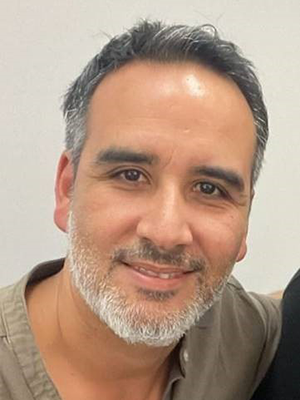
Physiotherapy
Short Bio
Physical therapist, Associate Professor at the Department of Kinesiology and the Department of Neuroscience at the Faculty of Medicine of the University of Chile. Masters degree in Neuroscience, PhD in Biomedical Sciences from the University of Chile.
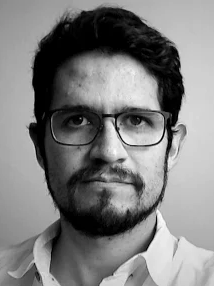
Kinesiology
Short Bio
Juan Jose Mariman is a Kinesiologist, with a Masters degree in Neuroscience and a Doctorate in Biomedical Sciences. He is a Full Professor in the Department of Kinesiology at the Metropolitan University of Educational Sciences, and Assistant Professor in the Department of Kinesiology at the University of Chile. He works in the fields of motor control, learning and neurorehabilitation, both in research and in teaching practice. He is currently researching the neurobiological correlates of post-stroke neurological recovery, as well as strategies to enhance motor recovery through non-invasive electrical stimulation.
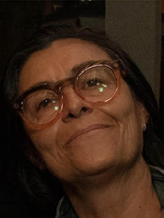
Physiotherapy/Neurological Rehabilitation
Short Bio
• Physiotherapist, Specialist in Neurological Rehabilitation – COFFITO.
• Masters Degree in Neuroscience – PUCRS.
• Bobath Adult Concept Instructor – IBITA.
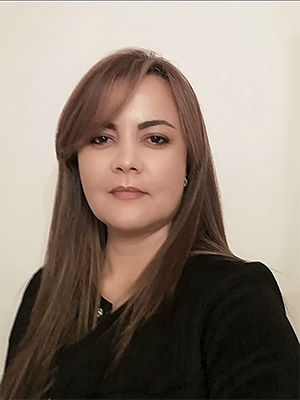
Physiotherapy
Mini Bio
• Associate Research Professor at the Autonomous University of Manizales - Colombia, coordinator of the postgraduate course in Neurorehabilitation.
• Research Professor in the Department of Human Movement at the Autonomous University of Manizales - Colombia.
• Specialist Physiotherapist and Master in Neurorehabilitation from the Autonomous University of Manizales with internationally certified training in the Bobath NDTA/IBITA Neurodevelopment Model, Feldenkrais Method, Motor Re-learning Method and Neurocognitive Rehabilitation.
• National and international speaker.
• Author of several articles, book chapters and books.
• International reviewer of high-impact books and journals.
• Instructor of Instrumental Manual Therapy.
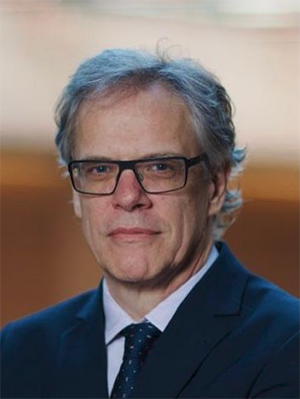
Neurology
Short Bio
• Full Member of the Brazilian Academy of Neurology.
• Adjunct Professor of Neurology at the Federal University of Health Sciences of Porto Alegre (UFCSPA).
• Neurologist at Santa Casa de Misericórdia de Porto Alegre.
• Professor of the Postgraduate Programs in Health Sciences (UFCSPA) and Rehabilitation Sciences (UFCSPA).
• CNPq Productivity Scholarship Holder.
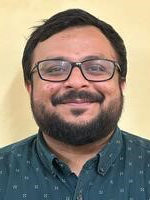
Neurofunctional Physiotherapy
Short Bio
Dr. Hitav Someshwar (PT) is an Assistant Professor at the Physiotherapy School & Center, Early Intervention and Rehabilitation Center for Children, TNMC & BYL Nair Ch. Hospital, Mumbai. A specialist in neurophysiotherapy, he holds an MPT in Neurophysiotherapy, a BPT, and a Diploma in Yoga Therapy.
With 82 publications in national and international journals and authorship in seven textbook chapters, Dr. Someshwar is an active contributor to neurorehabilitation research. He is a member of the World Rehabilitation Alliance (WHO initiative) and serves on key committees of the World Federation of Neurorehabilitation (WFNR) and the Indian Federation of Neurorehabilitation.
His accolades include the World Stroke Organization Young Investigator Award (2024), the WFNR Travel Fellowship Award (2022), the Research Maestro Award (2021, Indian Association of Physiotherapy Women Cell – West Zone), and the Young Investigator Award (2020, IFNR & AOSNR). He is also a mentee in the WFNR Mentorship Program.
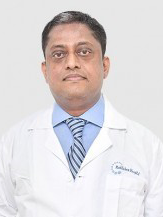
Neurorehabilitation
Short Bio
Dr Abhishek Srivastava (MBBS, MD, DNB, PhD) is Neurorehabilitation Specialist and Director, Center of Excellence for Physical Medicine & Rehabilitation at Kokilaben Hospital, Mumbai.
His areas of interest are Stroke and brain injury rehabilitation and specializes in management of persons with disorders of consciousness, hyperbaric oxygen therapy, rehab robotics and botulinum toxin for spasticity.
He has edited 4 books, contributed 20 chapters and 80 research papers, and 300 invited lectures in the field of Neurorehabilitation. Dr Srivastava has received Bindeshwati Sudarshan IAPMR Gold Medal, Dr Anisya Vasanth Award, Dr Navnendra Mathur Award, Dadhichi Hospimedica Award for the enormous contribution in neurosciences and rehabilitation.
At present, he holds many important positions including Member at Large, Presidium, World Federation for Neurorehabilitation and Chair Multiple Sclerosis SIG, WFNR; Member, Lancet Commission for Neurorehabilitation; Chair, Education Committee of Asia Oceania Society for Neurorehabilitation; Chair, Neurorehabilitation Sub-Section of Indian Academy of Neurology; and Secretary, Indian Federation for Neurorehabilitation.
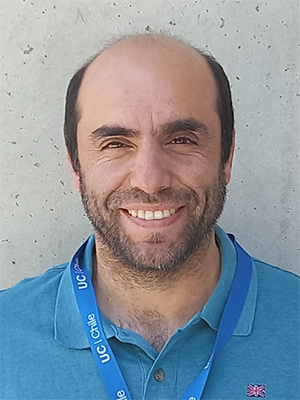
Kinesiology
Short Bio
Gonzalo Varas is a kinesiologist with a PhD in Rehabilitation Sciences and a specialization in Neuroscience from the School of Applied Health Sciences at the University of Illinois - Chicago, IL, USA, and a Master's degree in Neuroscience from the School of Medicine at the University of Chile. He currently works as an Assistant Professor in the Department of Kinesiology at the School of Health Sciences at the Pontifical Catholic University of Chile.
Dr. Varas is affiliated with several initiatives that seek to bring applied scientific research closer to clinical practice. In this context, he is an active member of the Latin American Association of Neurorehabilitation and is on the board of directors of the Chilean Association of Movement Sciences. He also teaches subjects such as Human Movement Analysis, Neuromechanics, and Neuroscience at the School of Health Sciences at the Pontifical Catholic University of Chile.
Dr. Varas' research focuses on understanding sensorimotor learning processes following injury to the Central Nervous System. Dr. Varas is currently working on a paradigm that seeks to understand the ability of people to learn reactive strategies in response to repetitive postural disturbances after having suffered a stroke. From this experimental paradigm, Dr. Varas seeks to answer several questions associated with how neuromuscular, kinematic and cerebral aspects are modified after a training protocol that specifically aims to improve reactive strategies and the risk of falls in people with Central Nervous System injuries and in elderly individuals.
08h00 – 17h00 Registration Desk Open
For in-person participants, the certificate will be issued after completing the evaluation questionnaire in the registration system.
Obtaining a Certificate of Participation
For online participants (via Zoom), please request the certificate directly from the HR department.
Below are hotels located in downtown Brasilia, very close to the congress venue. These hotels have been vetted by the Network for their location and quality.
Click on the hotel links for room rates, discount codes (exclusively for registered participants to reserve their accommodations directly with the hotel), and payment/cancellation terms. Space is limited. We suggest you reserve your hotel rooms as soon as possible. If you prefer, you can use a third party site to book your accommodations elsewhere. The Congress is not associated with any of the hotels listed here, and, as such, is exempt from any responsibility pertaining to a hotel’s accommodations, services, availability, or cancellation policies.
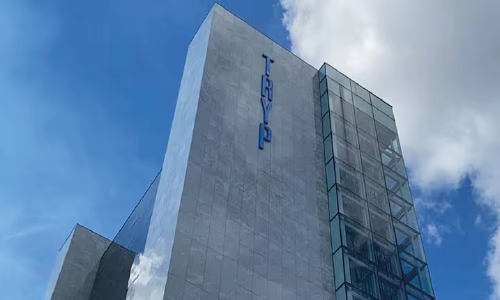
Book with a discount by email: reservas@ramadabrasilia.com.br
Book with a discount by email: reservas@trypbrasilia.com.br
Welcome to Brasilia
Brasilia, conceived as the new capital of Brazil, was constructed in the 1960s. With an urban plan by Lúcio Costa and buildings and monuments designed by Oscar Niemeyer, this unique city became a UNESCO World Heritage Site.
Situated in the central plateau region of the country, Brasília is nestled within the cerrado biome, which is characterized by grasslands, savannahs, and dry forests. Its surrounding environs are dotted with valleys, waterfalls and stunning panoramas distinct to this part of Brazil.
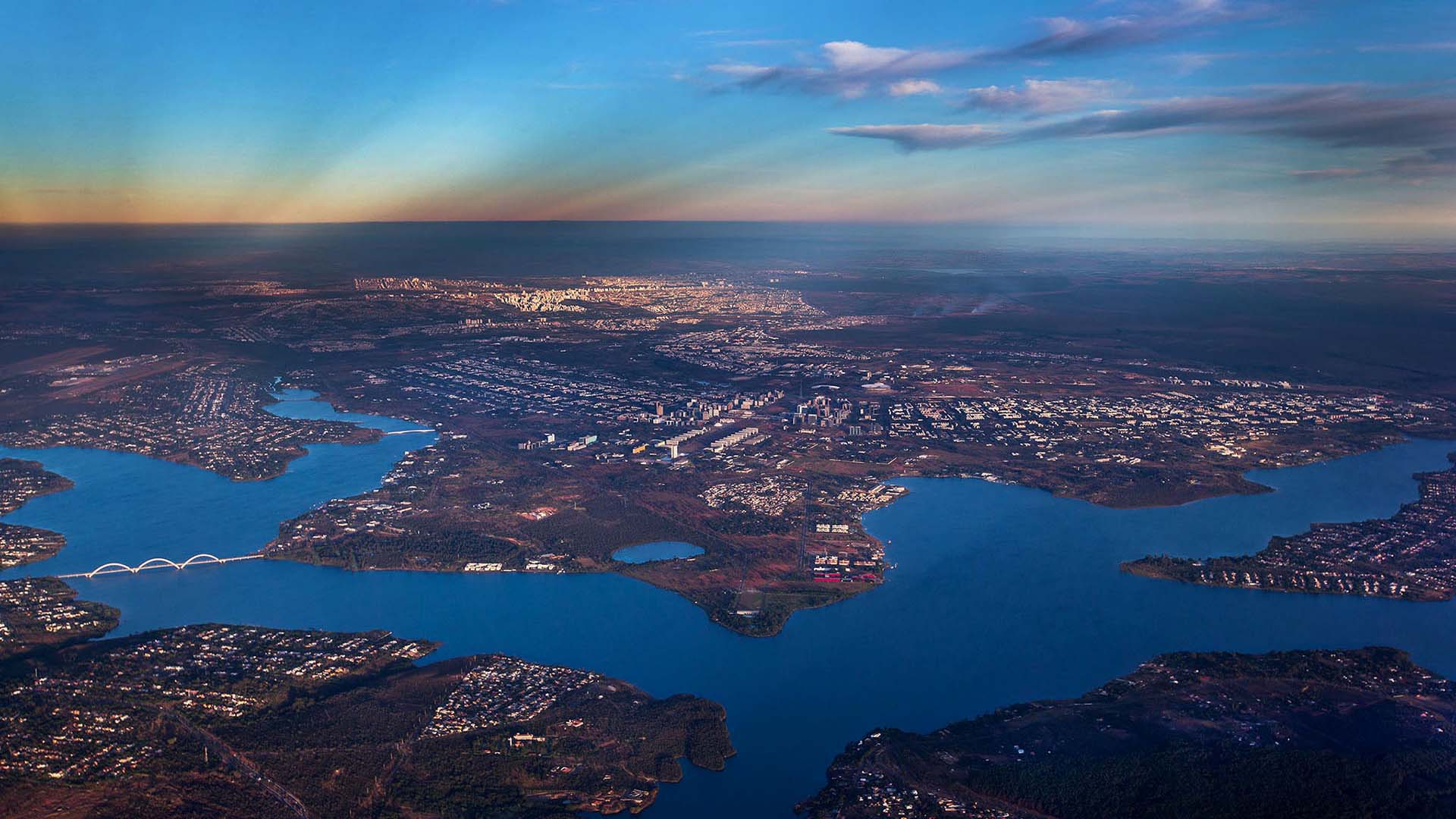
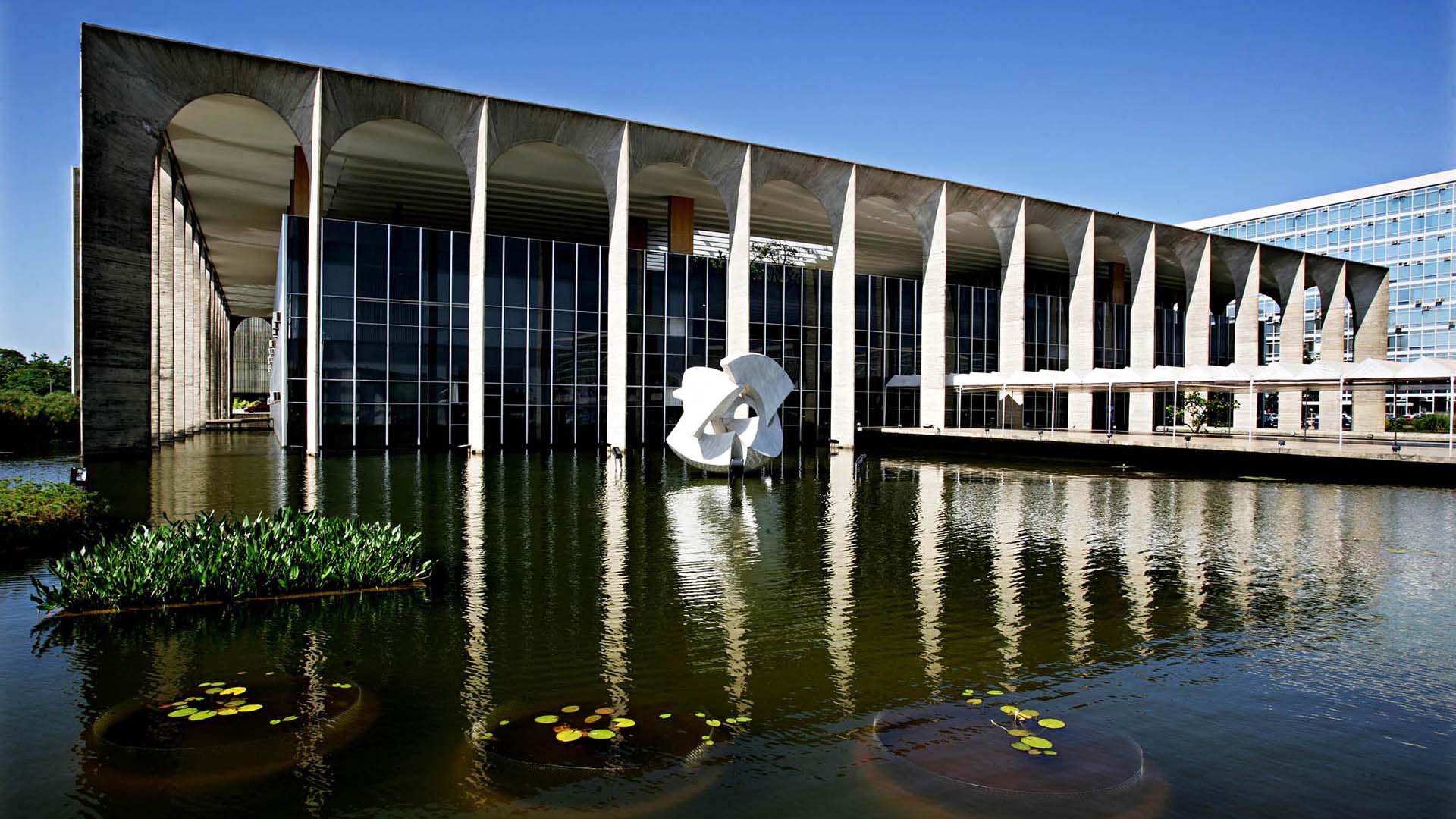
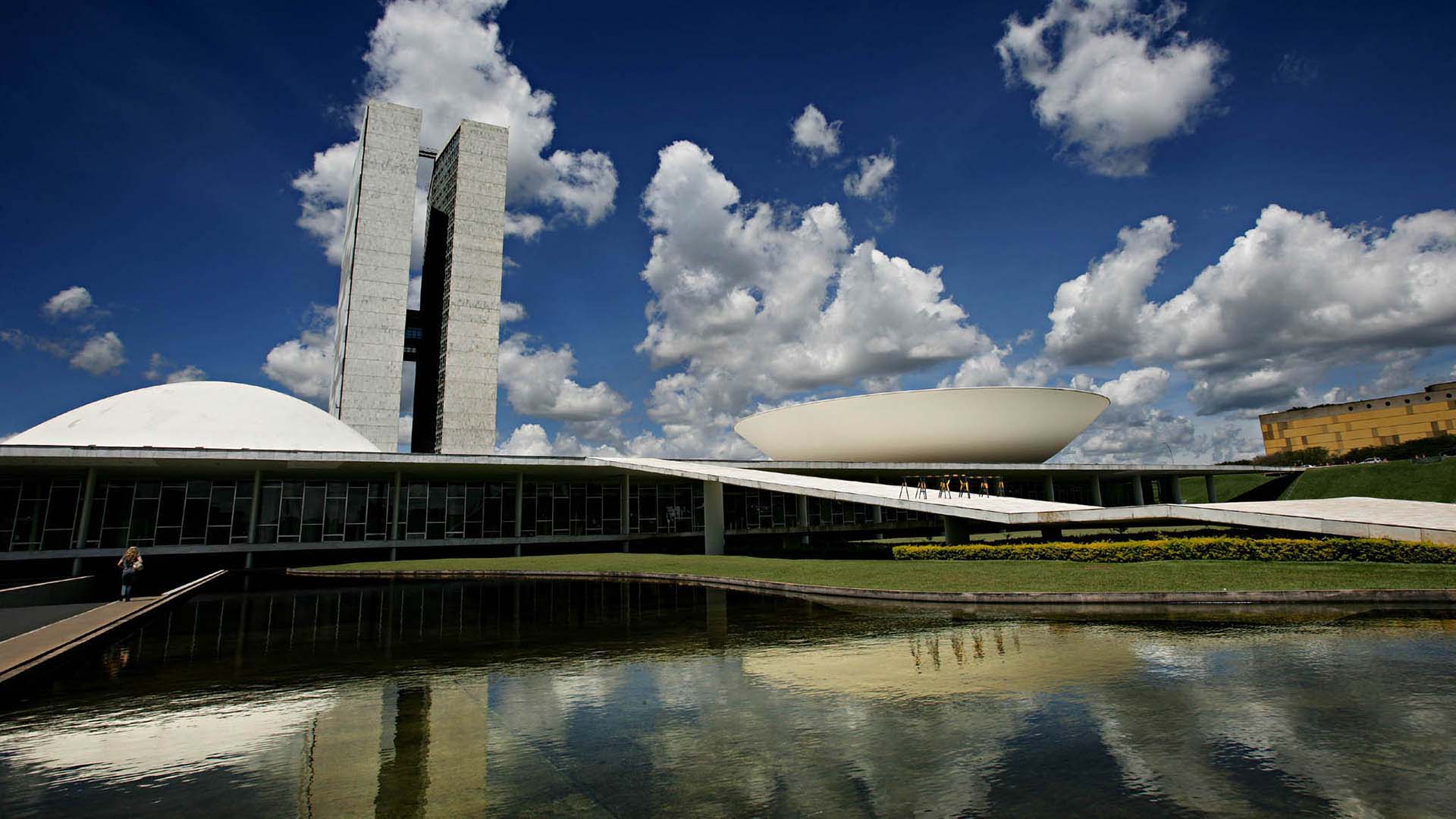

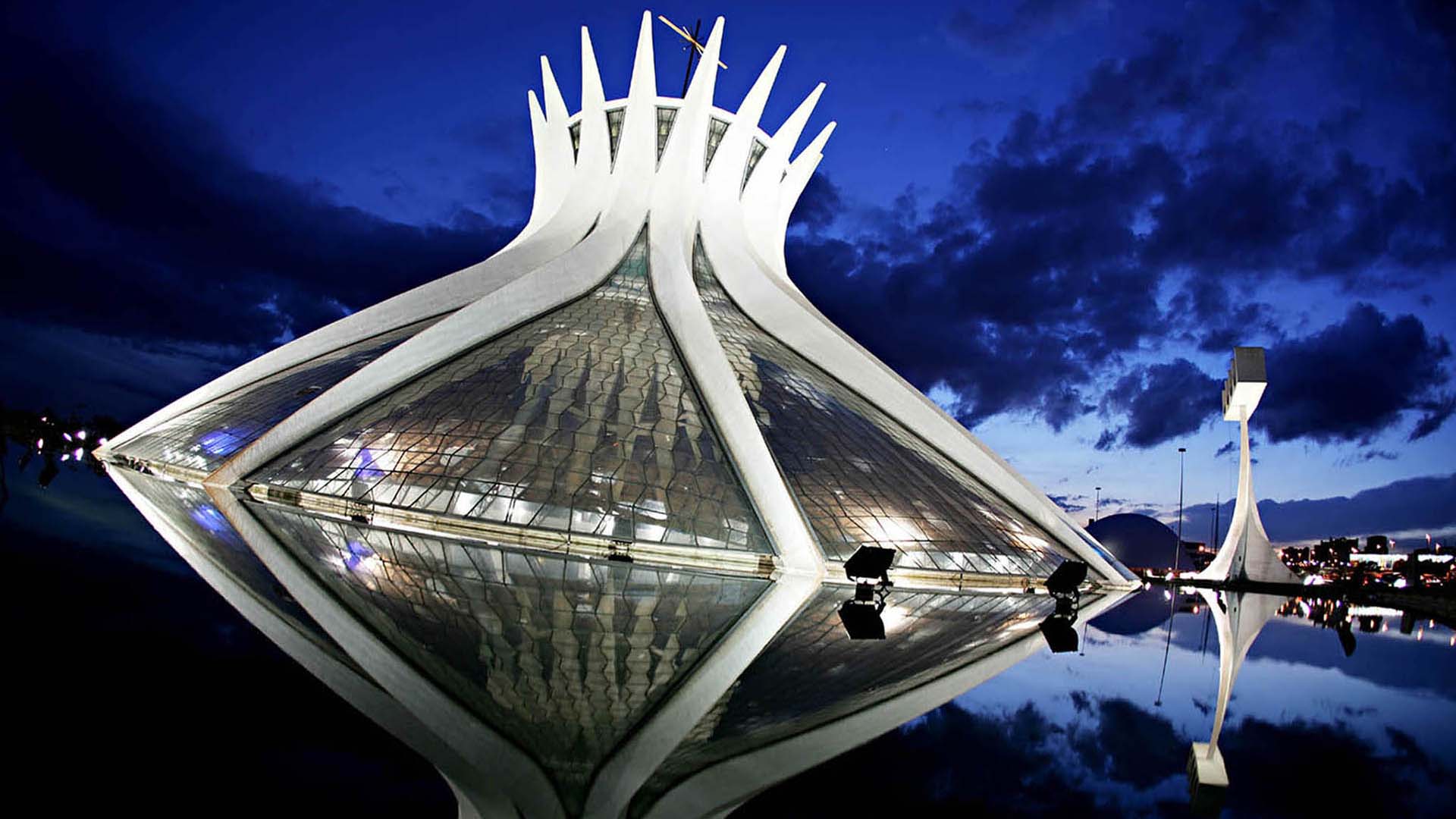
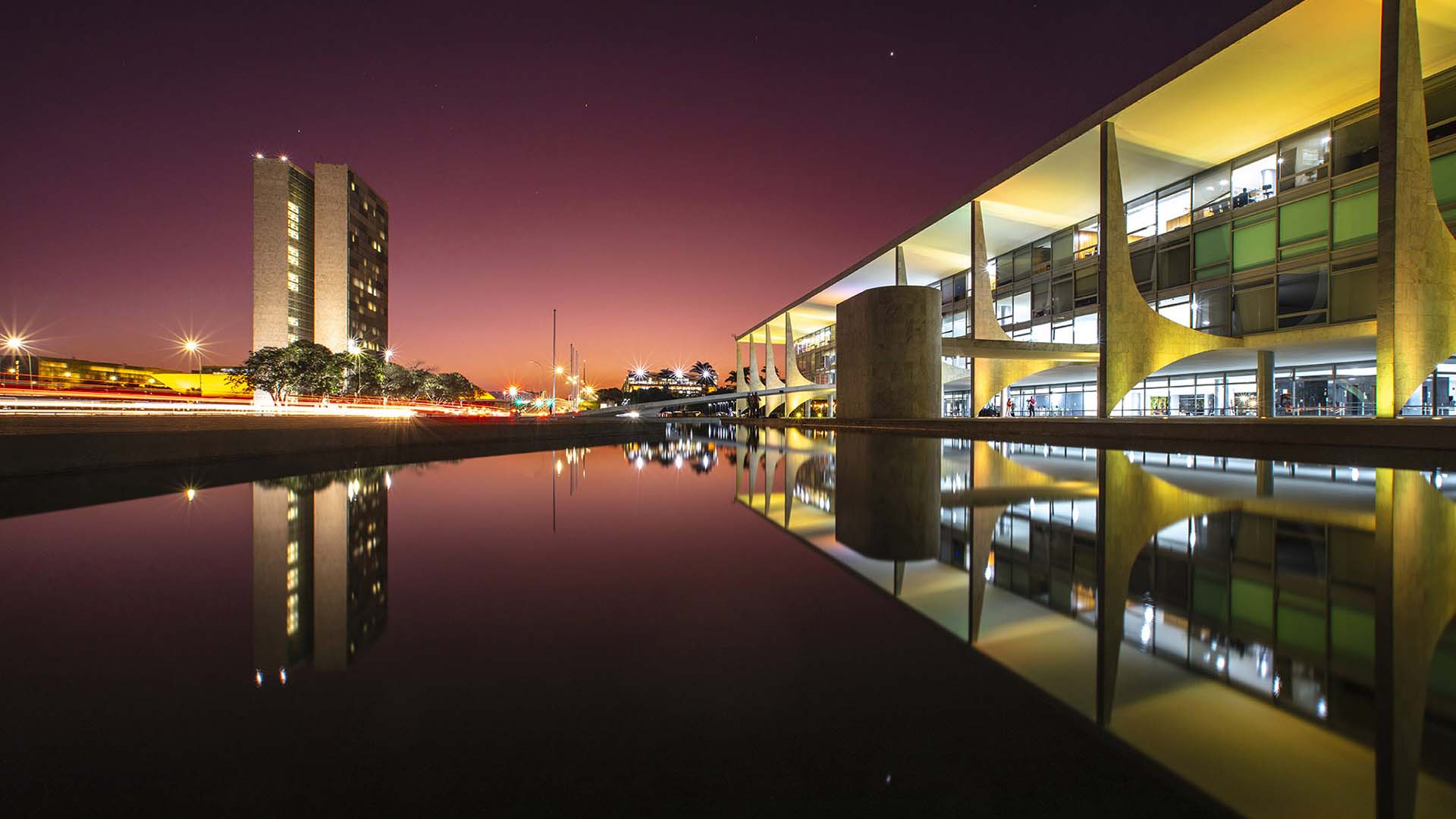


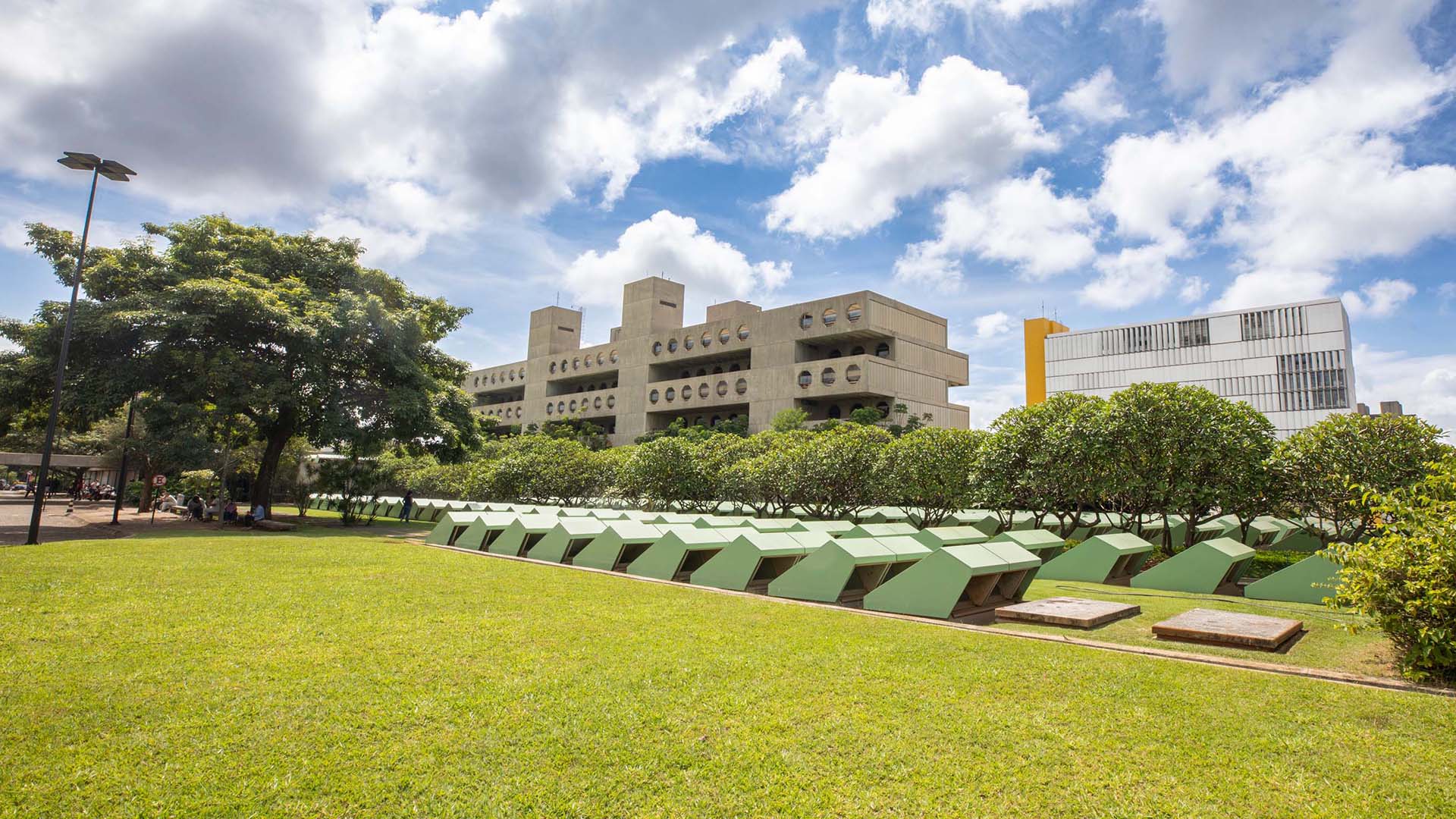
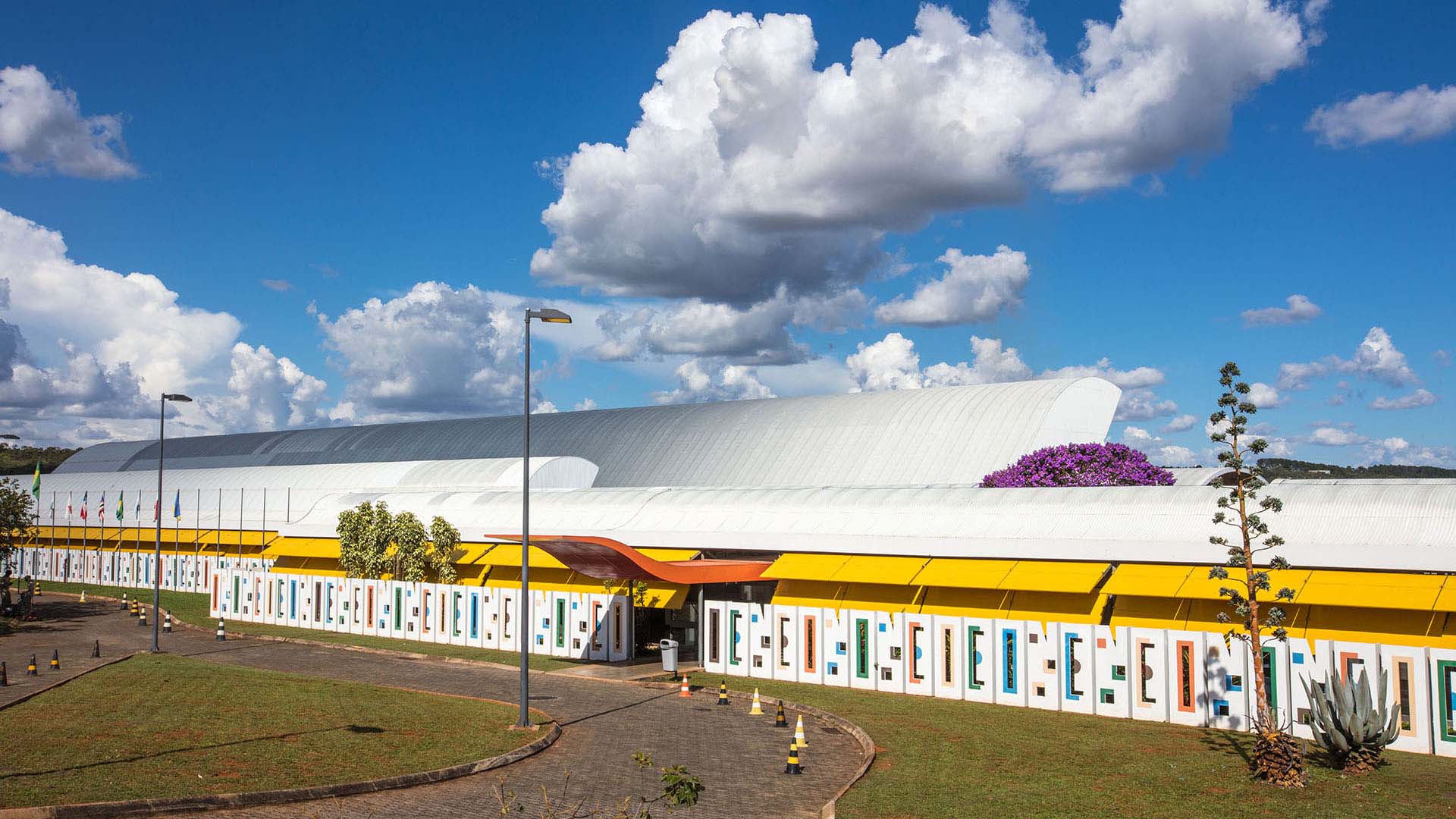

Designed by architect Oscar Niemeyer and inaugrated in 1960, the Planato Palace is the seat of Brazil’s Federal Government, where the President works. Along with Parlaiment and the Supreme Court buildings, it comprises the Praça dos Três Poderes.
Located 3 km from the SARAH Hospital, the palace has a public visitation program and is an excellent option for all visitors.
More information:
https://www.gov.br/planalto/pt-br/conheca-a-presidencia/palacios-e-residencias/palacio-do-planalto


Built in 1970 to house the Brazilian Ministry of Foreign Affairs, the Itamaraty Palace is one of the most acclaimed works by architect Oscar Niemeyer. Located 2.4 km from SARAH Hospital, it is open to the public, and filled with a large collection of paintings, sculptures and design artwork. An unmissable tour for all visitors.
More information:
https://www.gov.br/mre/pt-br/assuntos/palacio-itamaraty/visite-o-itamaraty


Inaugurated in 1960, this important work of modernista architecture by Oscar Niemeyer serves as the headquarters of the Brazilian Parliament. The House of Representatives and the Senate are located within those halls, which are located at the center o the famous Esplanada dos Ministérios, 2.7 km from SARAH Hospital.
More information:
https://www2.congressonacional.leg.br/visite


Considered by many to be Oscar Niemeyer's masterpiece, the Cathedral was inaugurated in 1960 and awarded the Pritzker Prize for world architecture in 1988. Located 1.5 km from SARAH Hospital, it is filled with sculptures and works of art, including stained glass windows . The uniqueness of the structure and the beauty of its interior make it a mandatory stop for all visitors.
More information:
https://catedral.org.br/guia-de-visitacao

Night view
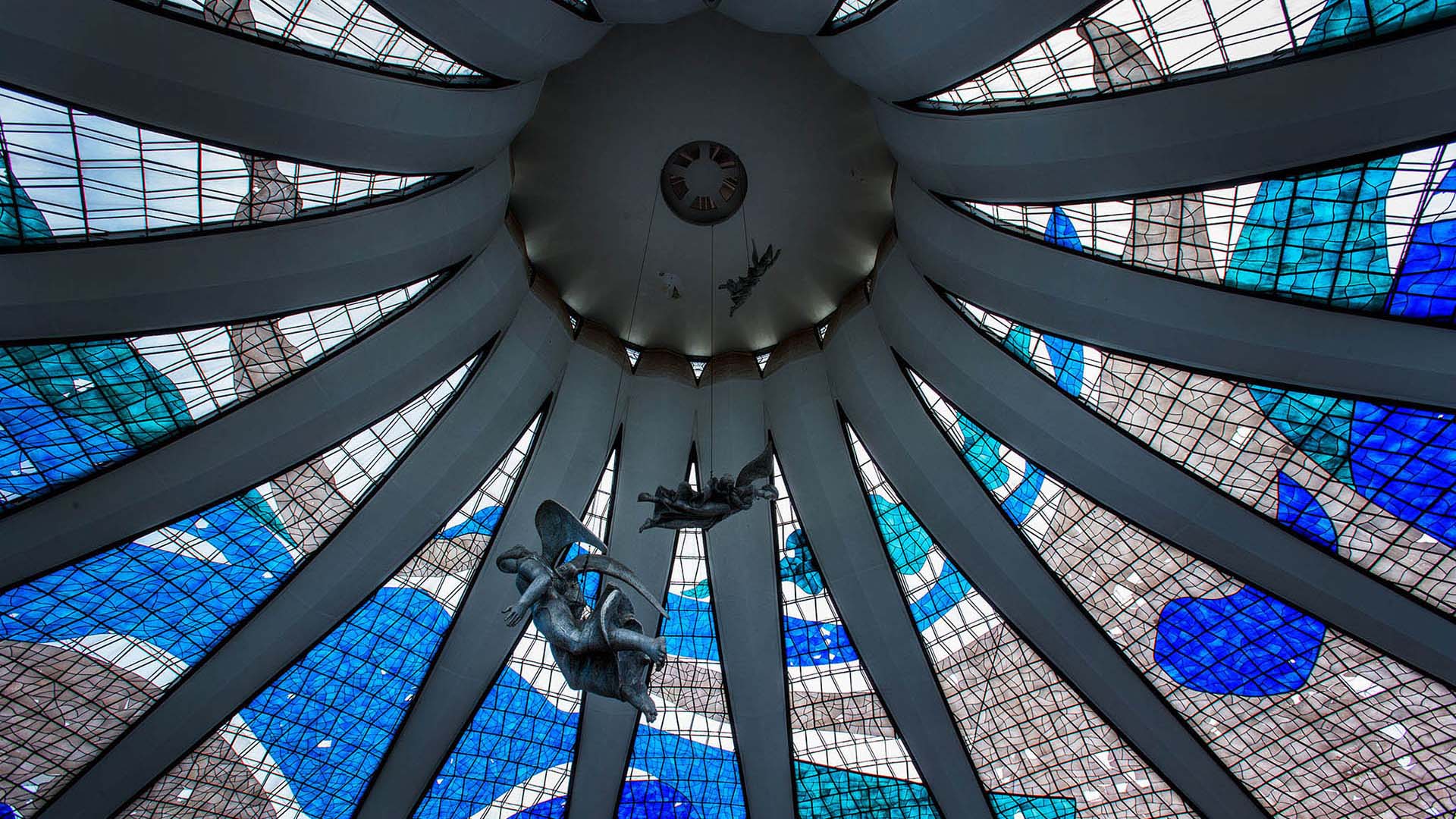
View of Interior
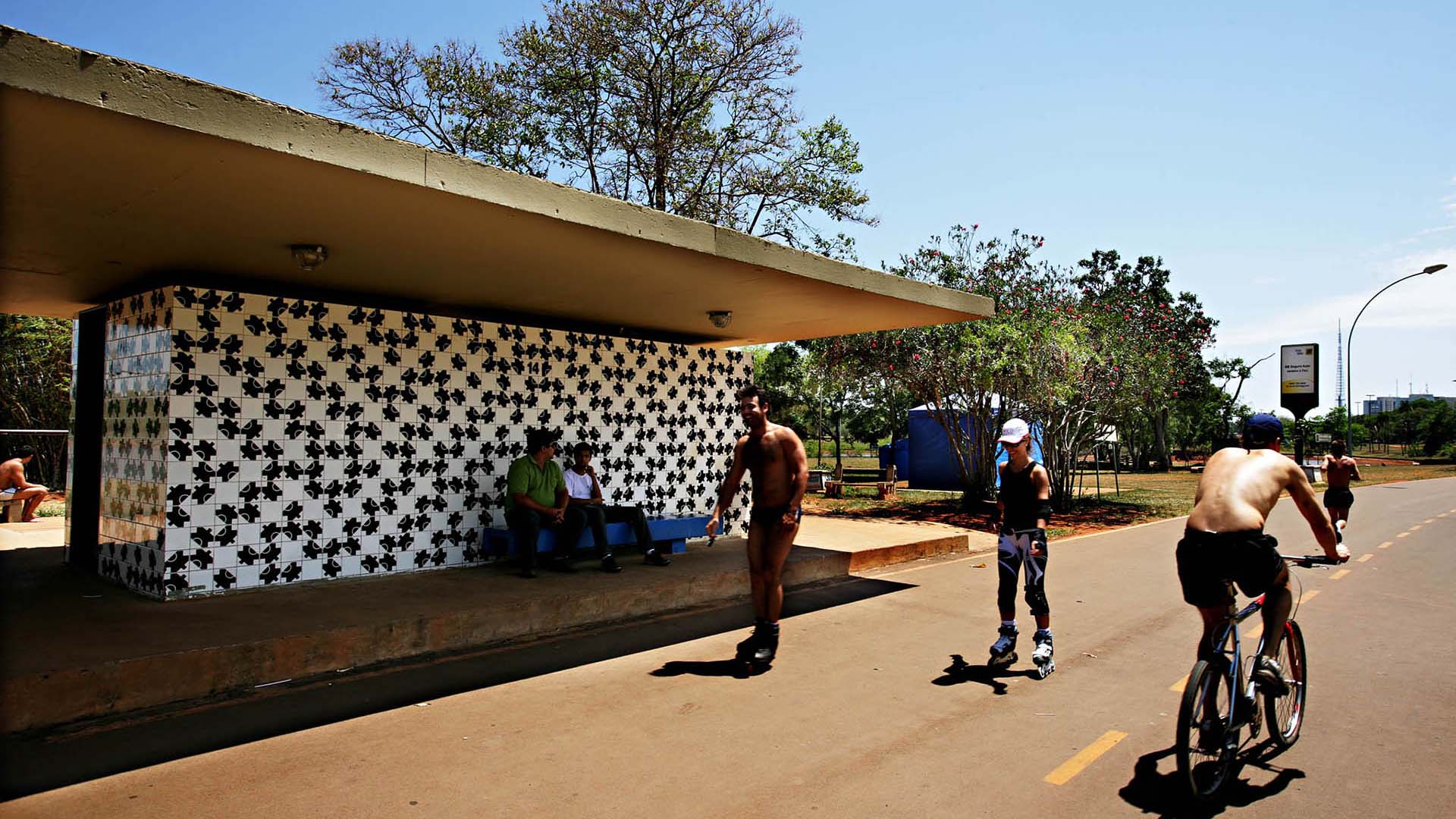
Founded in 1978, the Park was designed by Oscar Niemeyer, with landscaping by Burle Marx, urban planning by Lúcio Costa and full of tiles by Athos Bulcão, the park is an excellent location for sports, bike rides, walks ,and picnics. It is centrally located, close to hotels and 1.5 km from SARAH Hospital. It's a perfect spot for a late afternoon stroll or morning walk before the conference.
More information:
https://www.esporte.df.gov.br/parque-da-cidade/

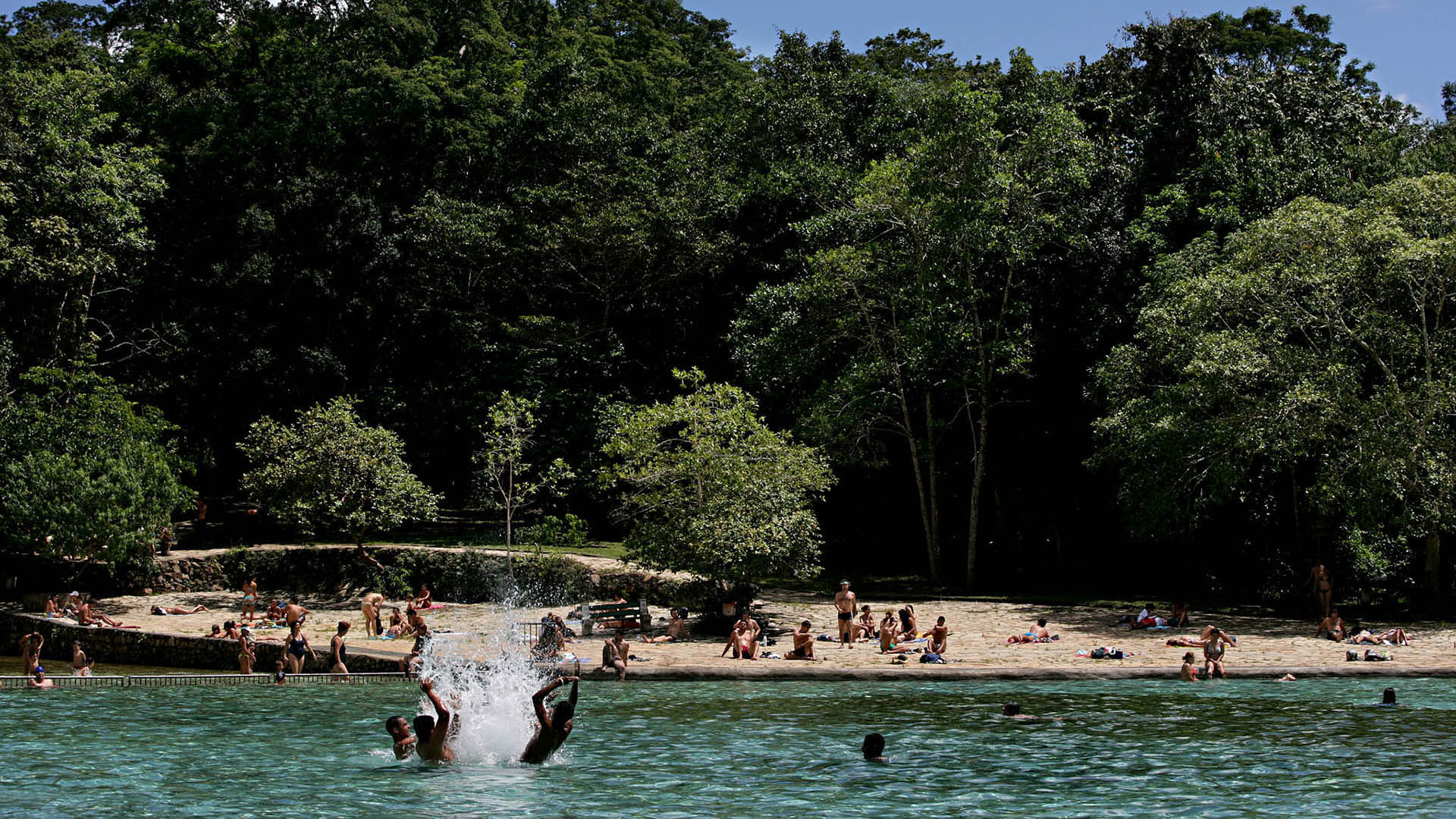
Designed as Conservation and Nature Protection initiative, the park is of utmost importance for protecting typical Cerrado ecosystems, and is replete with basins and springs that are essential to the region's supply of drinking water.
In addition to the rich fauna and flora, the Park has two mineral water pools and several trails for walking and cycling. The park is 8 km from SARAH Hospital. It is open from 6am to 4pm.
More information:
https://www.df.gov.br/agua-mineral/

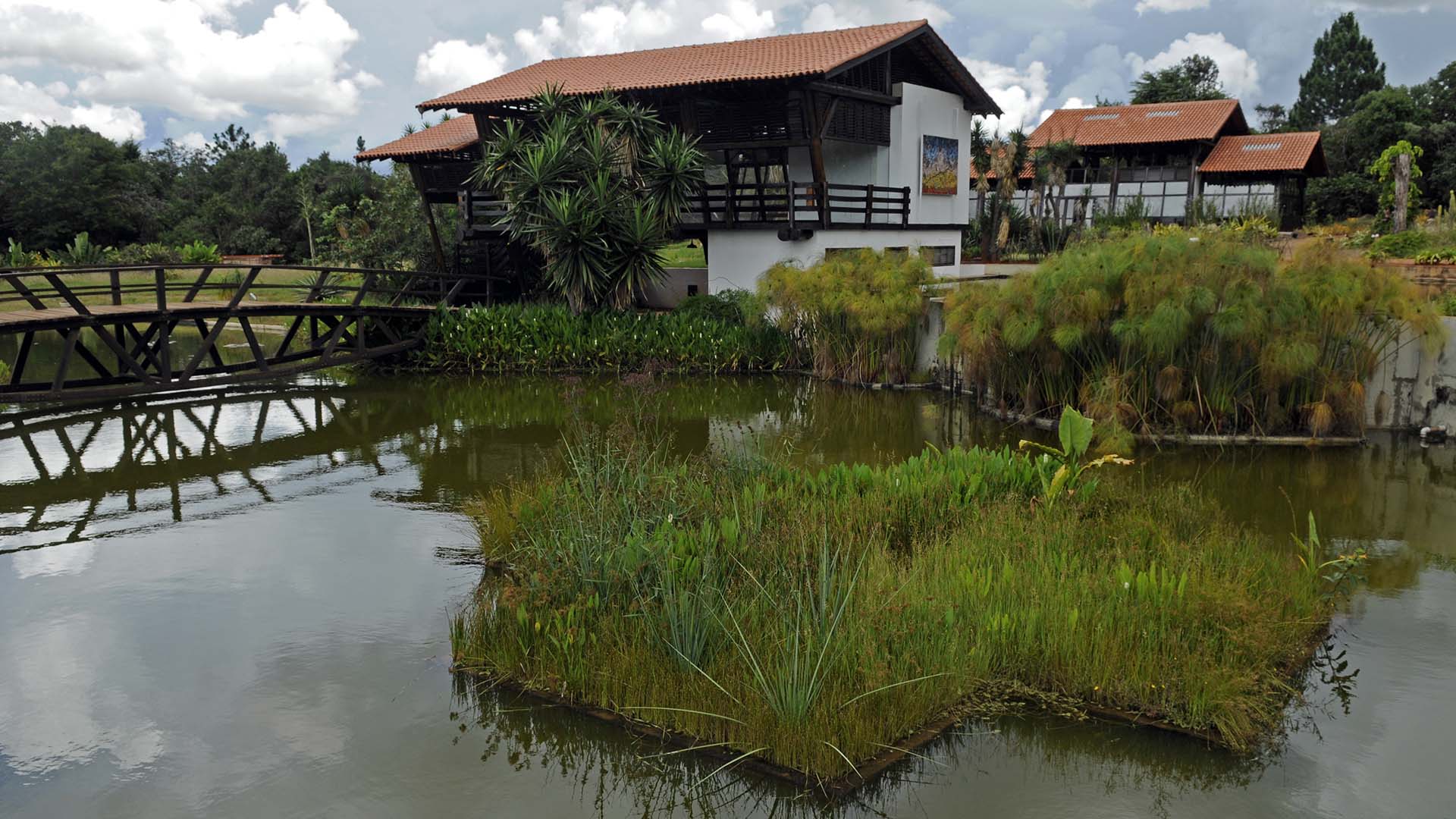
This protected area was designed for the creation and propagation of native plant collections, in addition to research, environmental awareness programs, and a site for leisurely appreciation of the area for biodiversity.
Comprised mainly of Cerrado vegetation, visitors can enjoy trails, picnic areas, a children's playground, orchid garden, various types of cacti, a library, and theme gardens, the Garden also has an onsite bistro ideal for breakfast, lunch, brunch or a snack.
Located 19 km from SARAH hospital, its gates are open from 9:00am to 4:30pm.
More information:
https://www.jardimbotanico.df.gov.br/


Located in the heart of Brasília, 1 km from SARAH Hospital, the TV Tower is one of the most visited attractions in the city. Measuring 230 meters high, it was designed by Lúcio Costa to house antennas that receive radio and TV station signals.
Its obervation deck, located at 75 meters high, is an unmissable tour for anyone who wants to see and understand the city's urban design. Visitors can also enjoy the beautiful light fountain and, on weekends, the traditional Torre Crafts Fair.
More information:
https://www.turismo.df.gov.br/torre-de-tv/

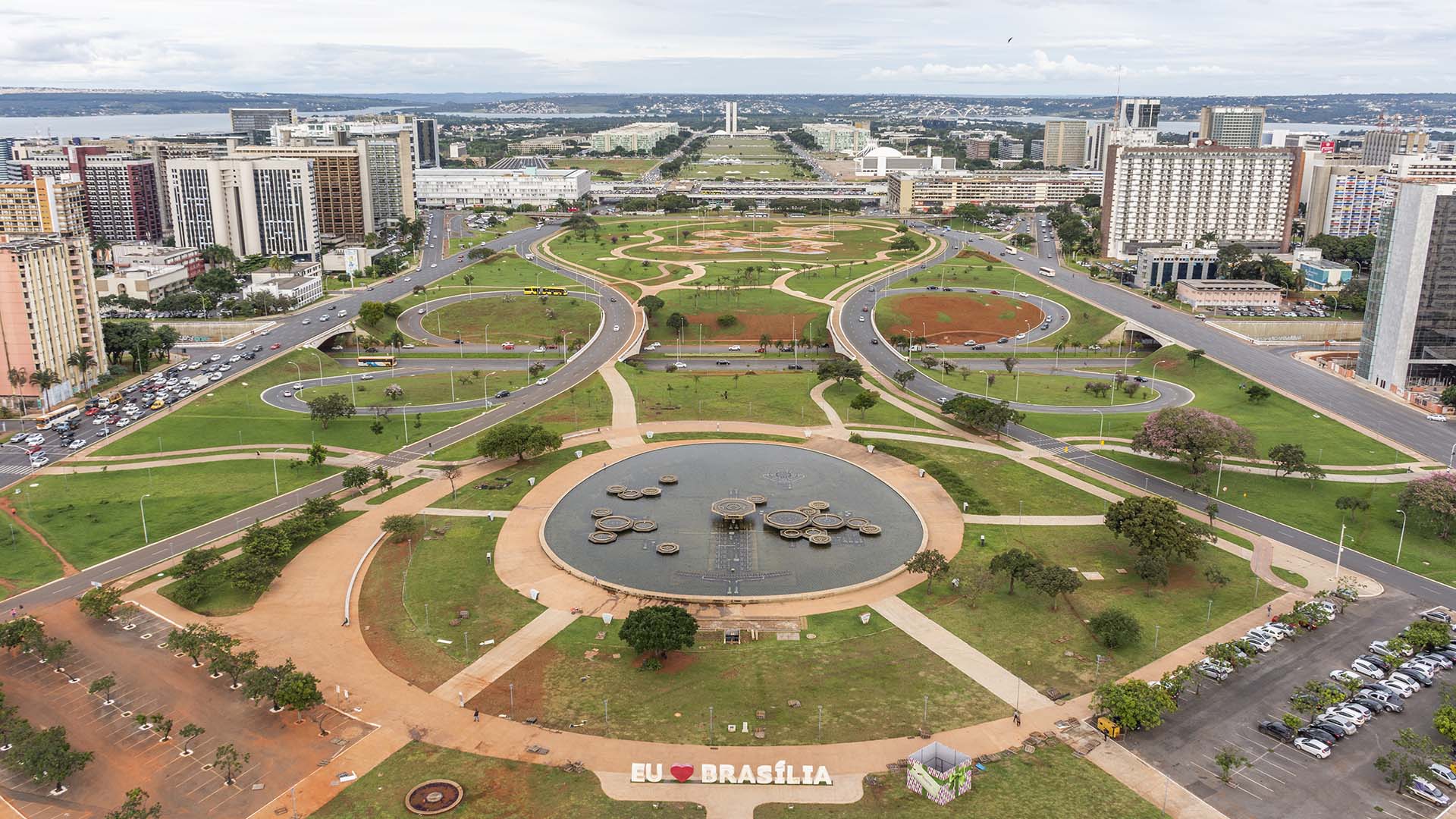
View from the observation deck
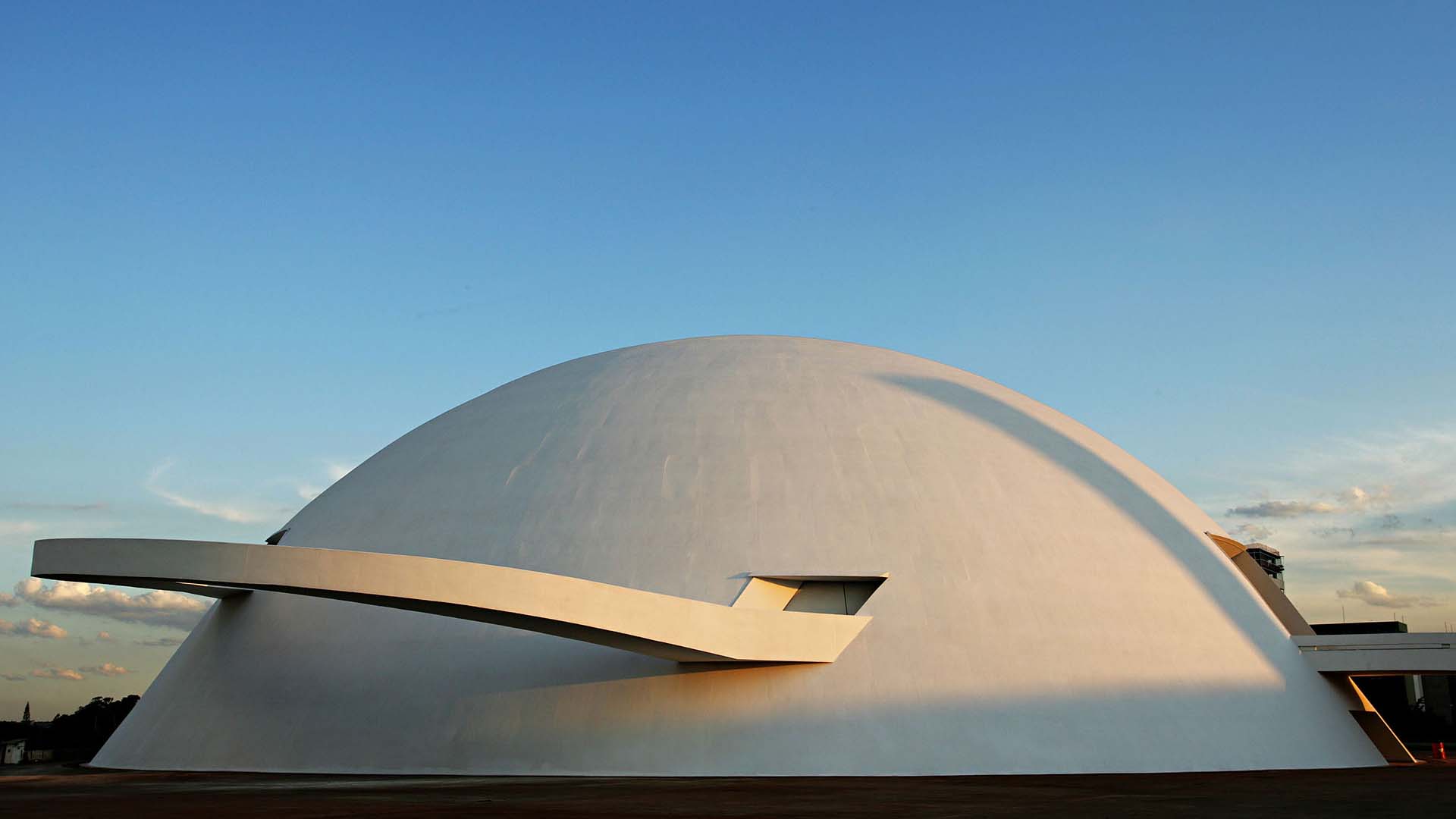
Opened in 2006, the Museum is an integral part of Lúcio Costa's initial project for the Plano Piloto and was one of Oscar Niemeyer's last works designed for Brasília.
The Museum, which has both permanent collections and temporary exhibitions, is a good option for those who want to know a little about the Brazilian visual arts scene. The SARAH Hospital is located 1.3 km away.
More information:
https://www.cultura.df.gov.br/museu-nacional-republica/

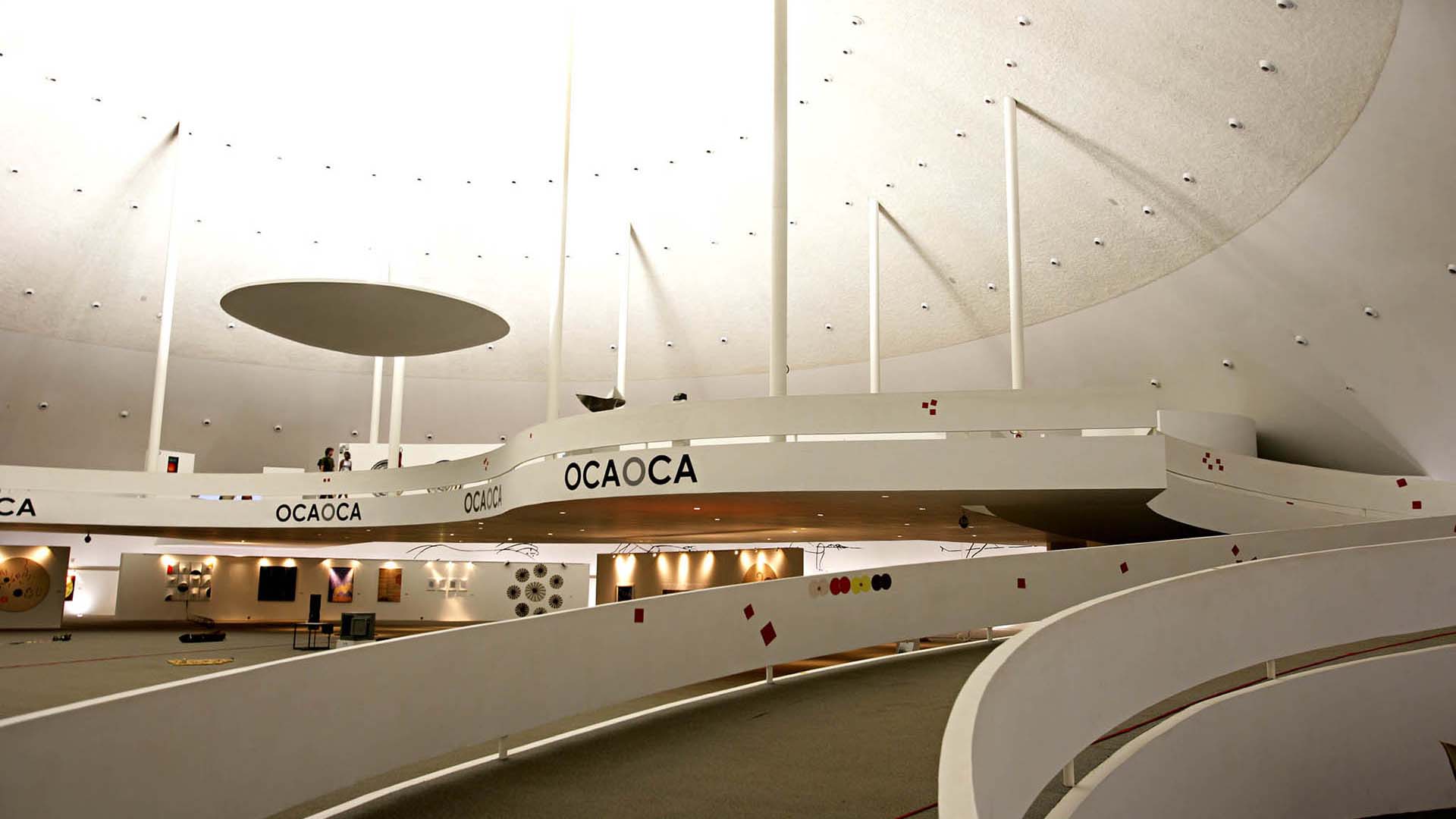
Internal view
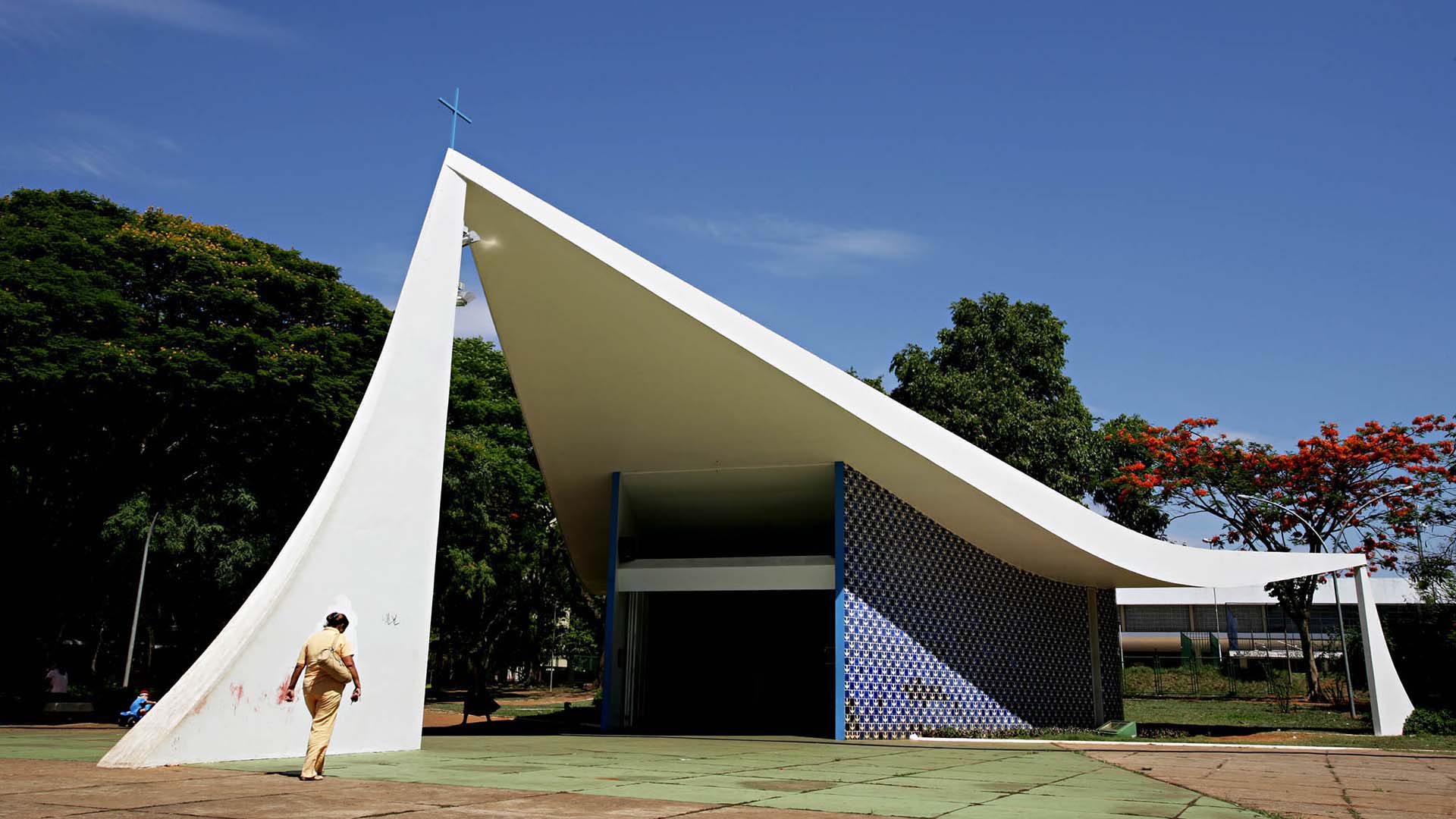
This Iconic building was inaugurated in 1958, the first masonry church constructed in the country’s new capital. Designed by Oscar Niemeyer, with a facade covered in tiles by Athos Bulcão and original frescoes with flags and angels by Alfredo Volpi, it is a very popular destination among visitors.
With time and renovations, Volpi's frescoes were lost and its interior gave way, in 2009, to paintings by Francisco Galeno, a student of Alfredo Volpi.
More information:
https://pt.wikipedia.org/wiki/Igreja_Nossa_Senhora_de_Fátima

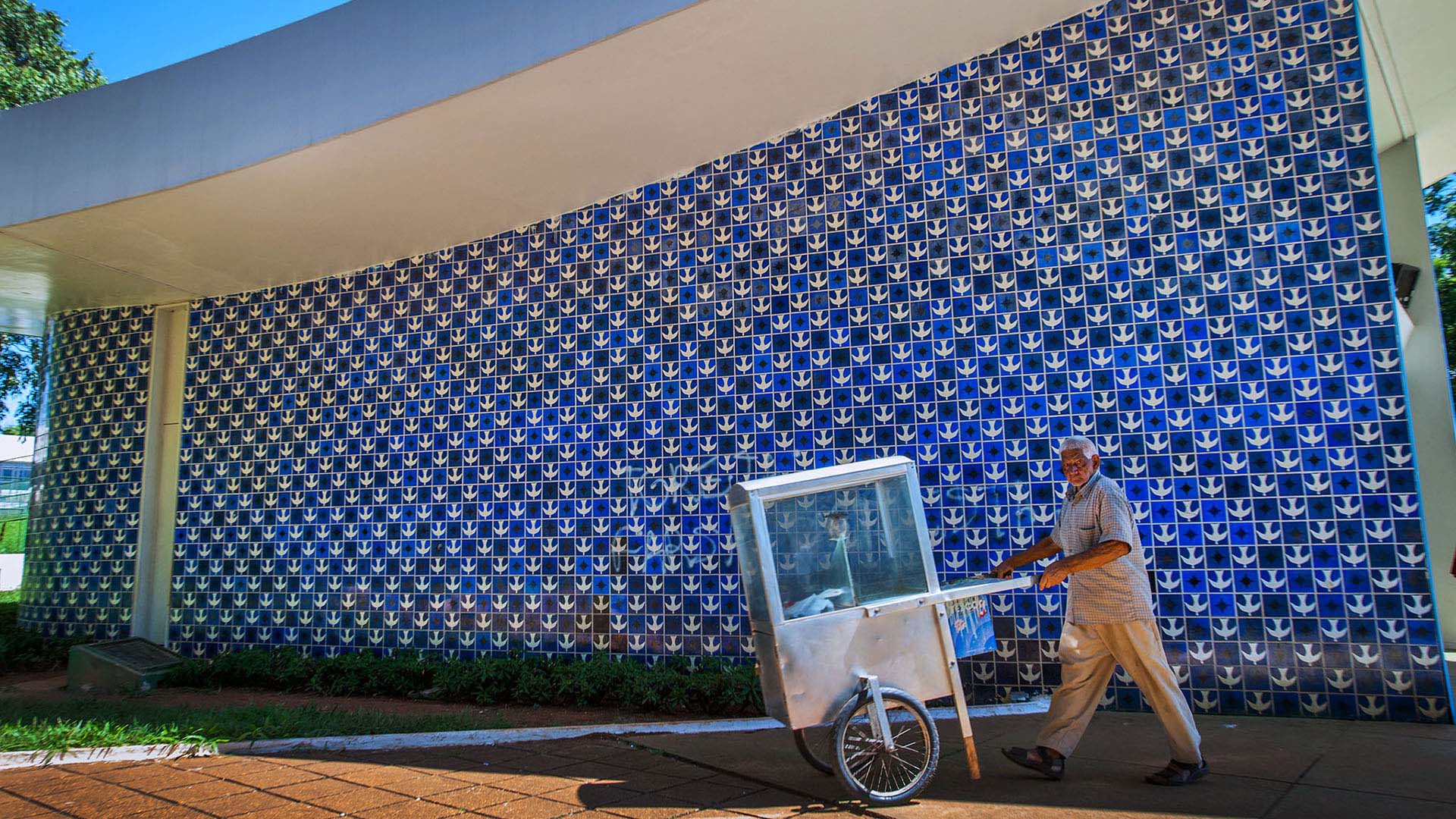
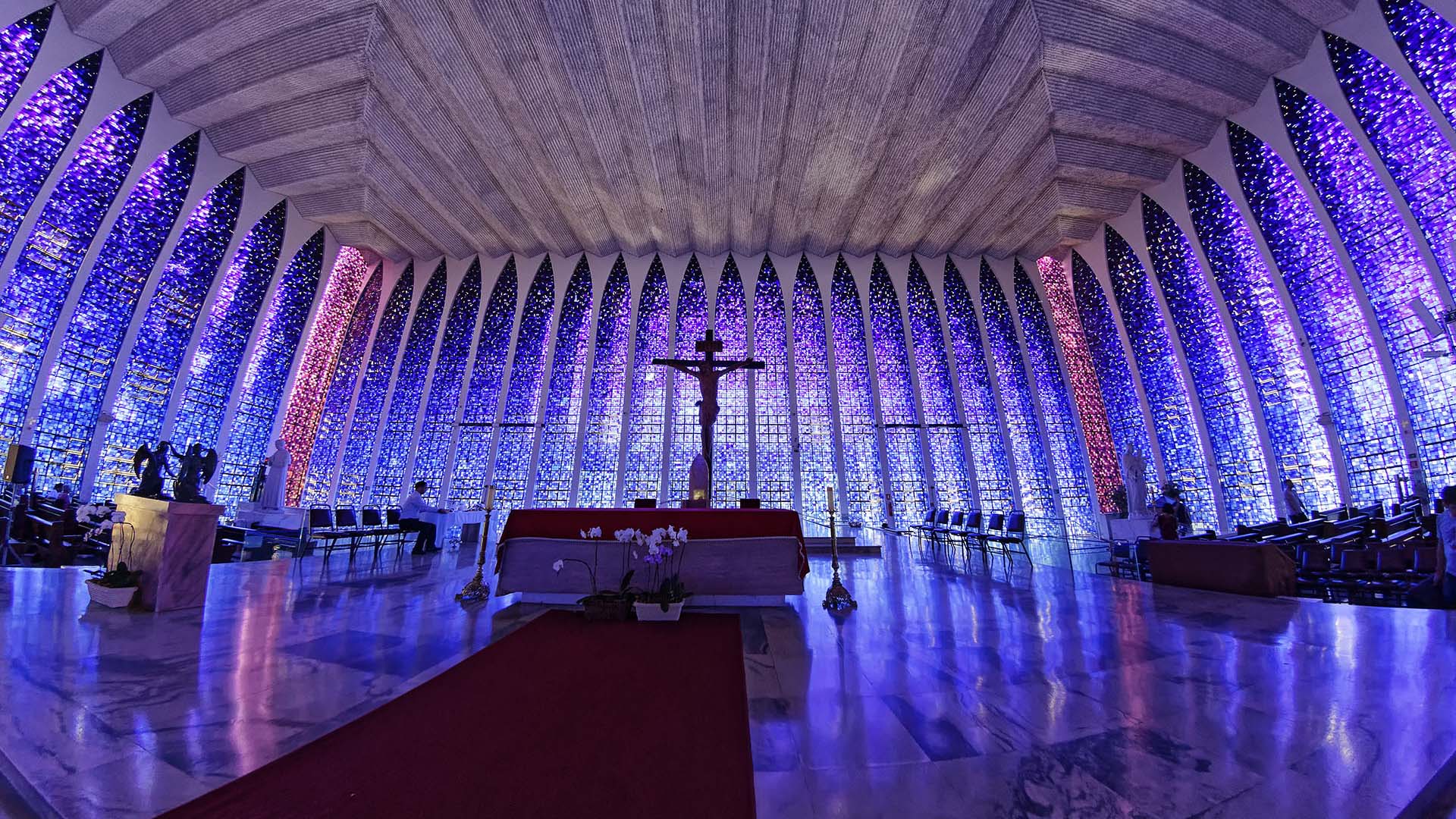
Located 500 meters from SARAH Hospital, with architectural design by Carlos Alberto Novaes, the Dom Bosco Sanctuary is one of the most beautiful and well-known tourist sites in Brasília.
It was built in honor of the patron saint of Brasília, São João Belchior Bosco, who prophesied the creation of Brasília in a dream, back in the 19th century. Its architecture is made up of 80 16-meter columns, which house incredible stained glass windows with 12 shades of blue.
More information:
https://arqbrasilia.com.br/todas_paroquias/santuario-dom-bosco/

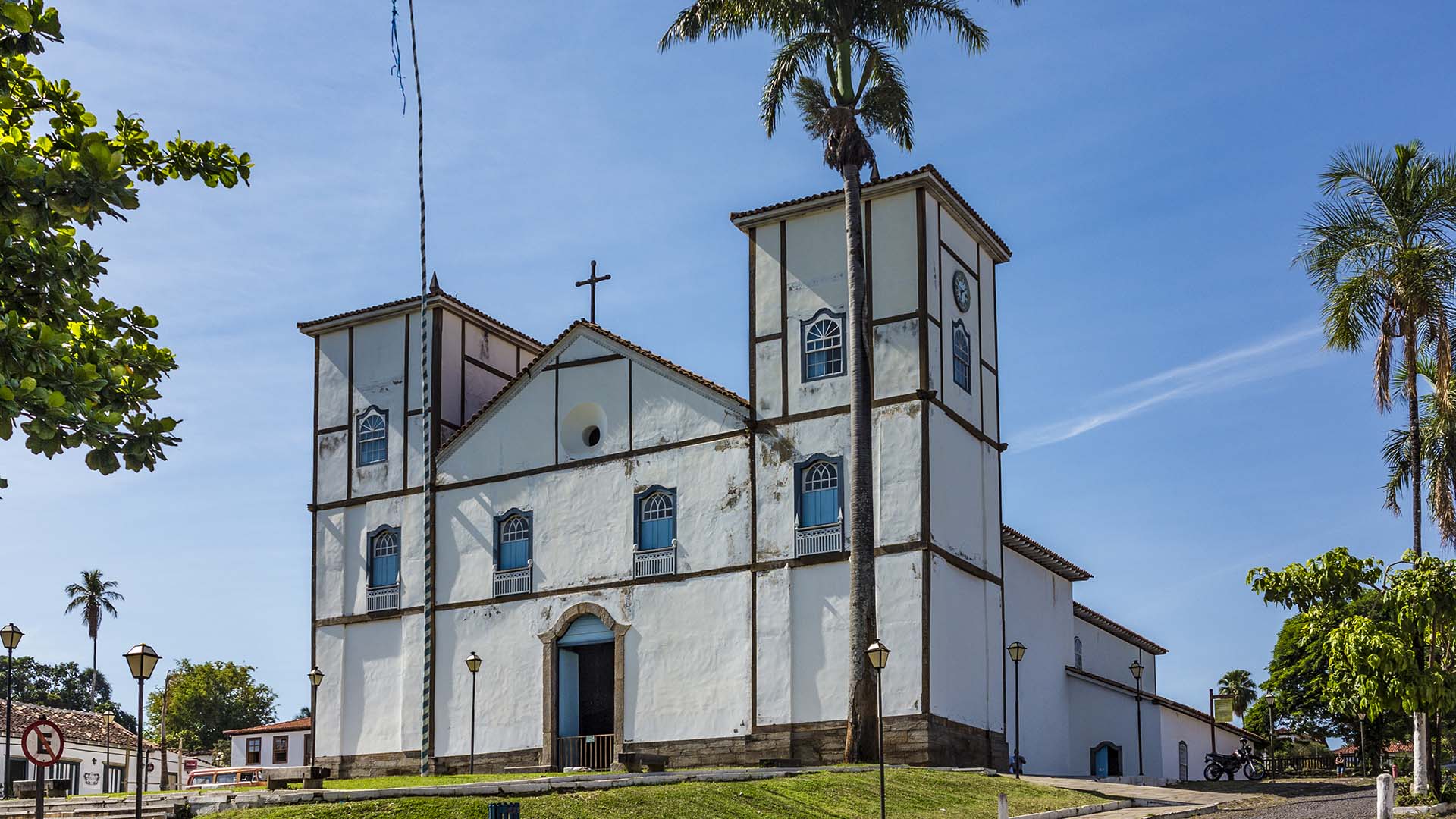
Pirenópolis is a city known for its colonial Portuguese architecture. It is located 150 km from Brasilia and hosts a number of popular folk festivals, such as the Cavalhadas and the Feast of the Holy Spirit.
Lush with the exuberance of the Cerrado and with waterfalls and trails, the quaint city is na excelente option for those who enjoy cultural and ecological tourism.
More information:
https://www.pirenopolis.com.br/

Pirenópolis Church
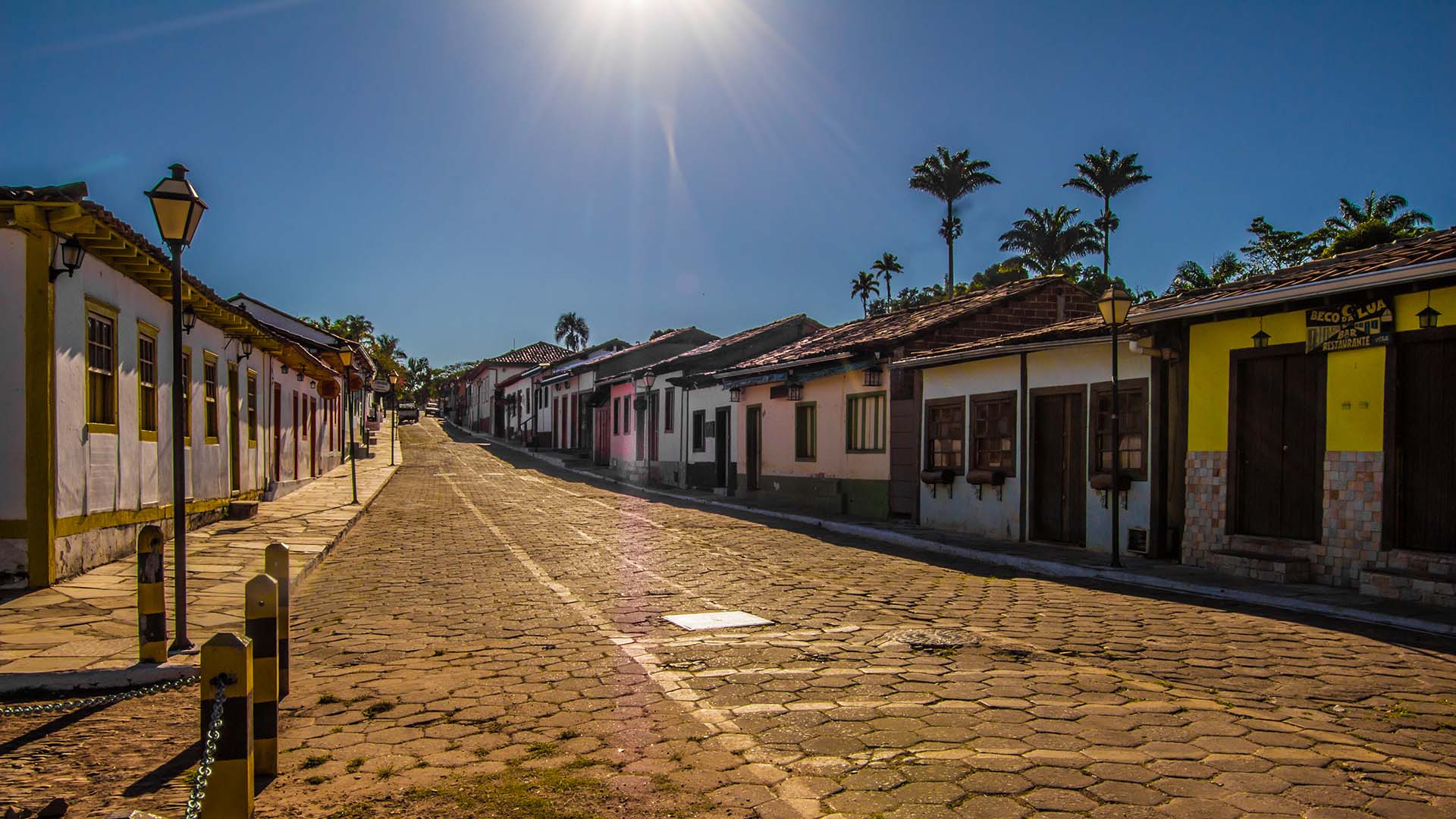
City
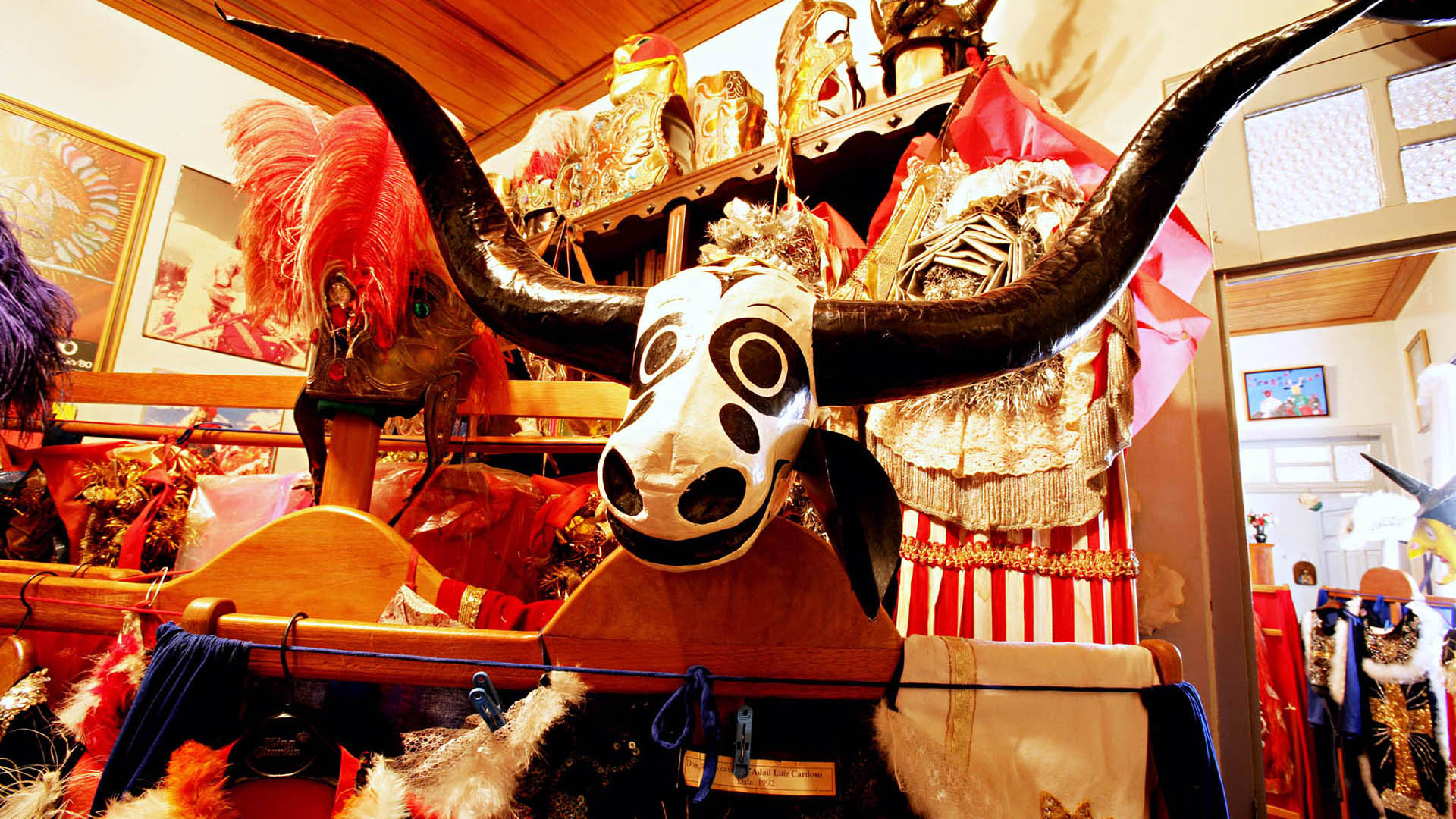
Cavalhadas Museum
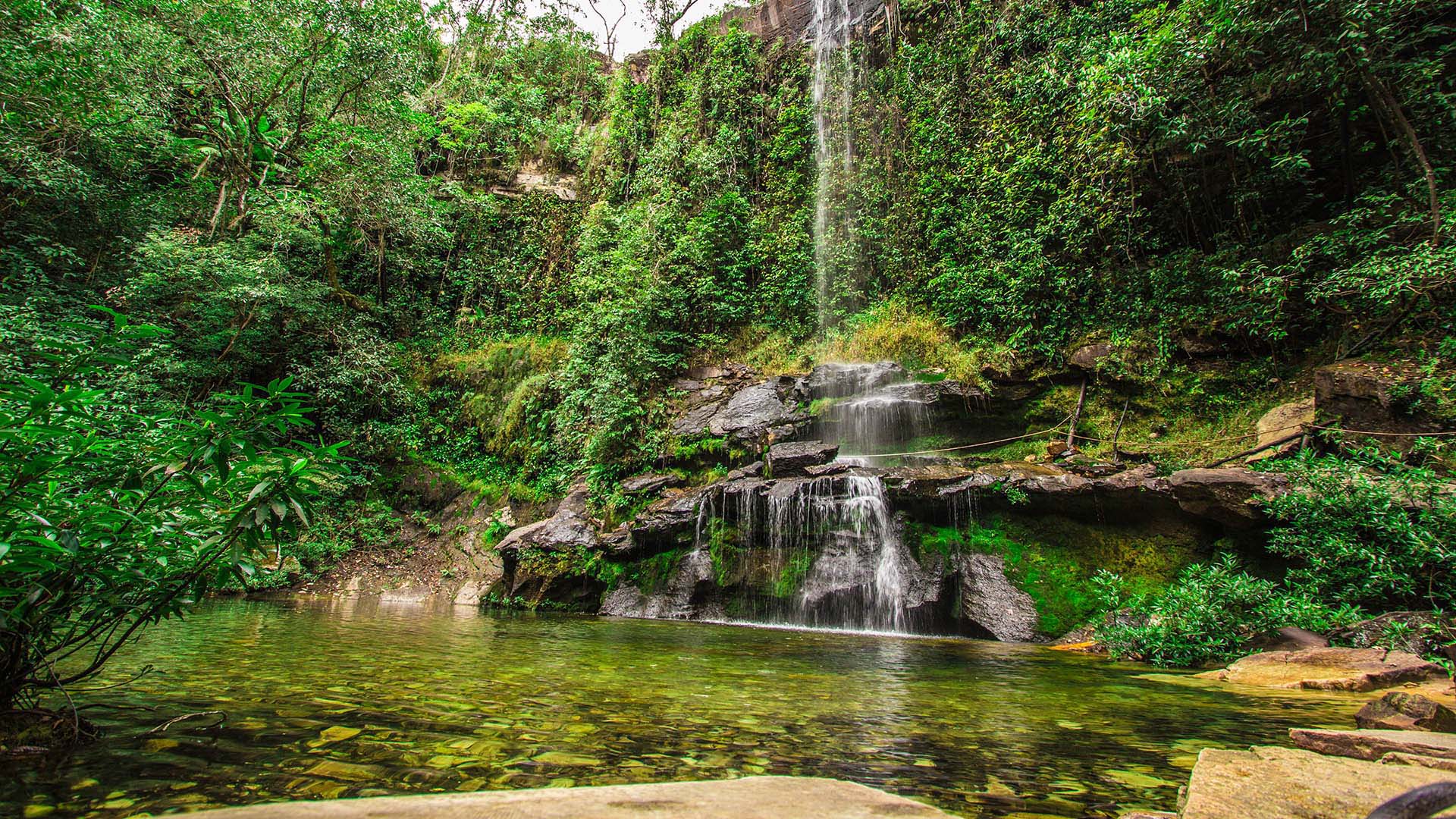
Rosário Waterfall

Abade Waterfall

Declared a UNESCO World Heritage Nature Site, the Park can be accessed through the town of São Jorge (260 km from Brasília), located between the Alto Paraíso de Goiás and Cavalcante municipalities.
This is a region of environmental procection spanning 240,000,000 acres of Cerrado biodiversity: native species vegetation that exist nowhere else, as well as hundreds of springs, streams, rivers, rock formations, and waterfalls that date back billions of years.
The Park’s rare exuberance makes it an international destination for lovers of natura and ecoturismo enthusiasts.
More information:
https://www.icmbio.gov.br/parnachapadadosveadeiros/guia-do-visitante.html

National Park

Paredões scenery
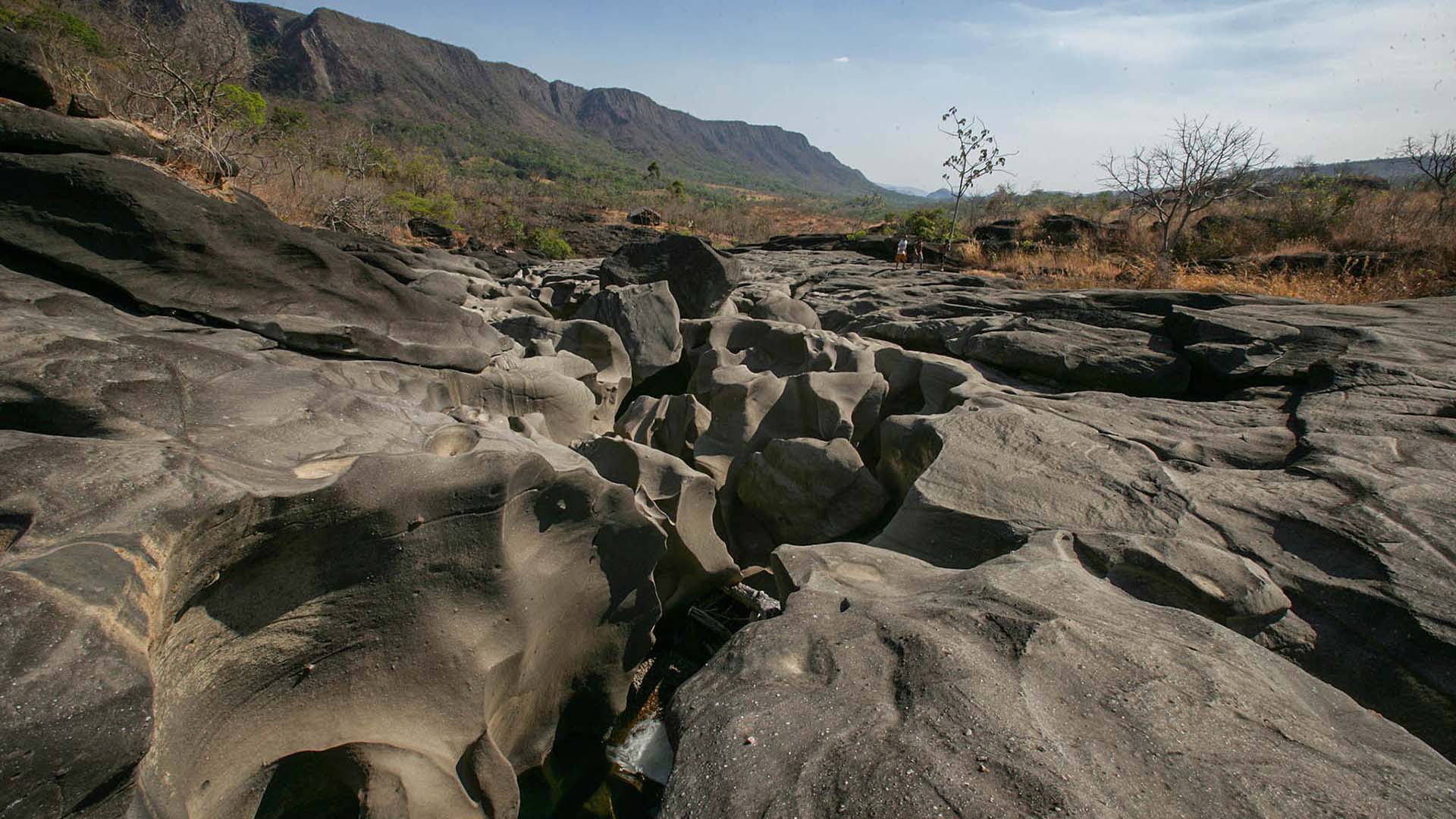
Vale da lua [“Valley of the Moon”]

Carioquinhas Waterfall

Inaugurado en 1960 y proyectado por el arquitecto Oscar Niemeyer, es la sede del Poder Ejecutivo Federal, donde trabaja el Presidente de la República. El palacio forma parte de la Plaza de los Tres Poderes, junto con la sede del Parlamento y el Palacio de Justicia.
Situado a 3 km del Hospital SARAH, el palacio tiene un programa de visitas públicas y es una excelente opción para todos los visitantes.
More information:
https://www.gov.br/planalto/pt-br/conheca-a-presidencia/palacios-e-residencias/palacio-do-planalto


Construido en 1970 para ser la sede del Ministerio de Relaciones Exteriores de Brasil, el Palacio de Itamaraty es una de las obras más bellas del arquitecto Oscar Niemeyer. Situado a 2,4 kilómetros del Hospital SARAH y abierto al público, el palacio está repleto de obras de arte, esculturas y diseños. Una visita obligatoria para todos los visitantes.
More information:
https://www.gov.br/mre/pt-br/assuntos/palacio-itamaraty/visite-o-itamaraty


Sede del Parlamento brasileño, inaugurado en 1960, es una importante obra de arquitectura moderna, también diseñada por Oscar Niemeyer. El conjunto de edificios alberga la Cámara de Diputados y el Senado Federal y está situado en el centro de la Explanada de los Ministerios, a 2,7 km del Hospital SARAH.
More information:
https://www2.congressonacional.leg.br/visite


Inaugurado en 1960, es considerada por muchos la obra maestra de Oscar Niemeyer y recibió el Premio Pritzker de arquitectura mundial en 1988. Situada a 1,5 km del Hospital SARAH, la catedral está repleta de esculturas y obras de arte y cuenta con vitrales que la convierten en una visita obligatoria para todos los visitantes.
More information:
https://catedral.org.br/guia-de-visitacao

Vista nocturna

Vista interna

Fundado en 1978, diseñado por Oscar Niemeyer, con paisajismo de Burle Marx, urbanismo de Lúcio Costa y repleto de azulejos de Athos Bulcão, el parque es una excelente opción para practicar deportes, ciclismo, senderismo y hacer picnics. Está situado en el centro, cerca del sector hotelero y a 1,5 kilómetros del Hospital SARAH. Es un lugar perfecto para pasear por la tarde o caminar por la mañana antes de la conferencia.
More information:
https://www.esporte.df.gov.br/parque-da-cidade/


Creado junto con la ciudad de Brasilia como Unidad de Conservación y Protección Integral, el parque es de suma importancia para la conservación de la naturaleza en la región porque protege ecosistemas típicos del Cerrado y alberga cuencas y manantiales fundamentales para el abastecimiento de agua potable de la región.
Además de la riqueza de su fauna y flora, el parque cuenta con dos piscinas de agua mineral y varias rutas de senderismo y ciclismo. El parque está a 8 kilómetros del Hospital SARAH. Abierto de 6:00 a.m. a 4:00 p.m.
More information:
https://www.df.gov.br/agua-mineral/


Un espacio protegido destinado a la creación y mantenimiento de colecciones de plantas, la investigación, la educación ambiental y el ocio para la conservación de la biodiversidad.
Compuesto básicamente por vegetación de Cerrado, los visitantes pueden disfrutar de senderos, zonas de picnic, un parque infantil, un vivero de orquideas, un cactario, una biblioteca y jardines temáticos, así como de un agradable bistró ideal para desayunar, almorzar, hacer un brunch o tomar un lonche.
Situado a 19 km del hospital SARAH, la entrada está abierta de 9:00 a.m. a las 4:30 p.m.
More information:
https://www.jardimbotanico.df.gov.br/


Situada en el corazón de Brasilia, a 1 kilómetro del Hospital SARAH, la Torre de TV es una de las atracciones más visitadas de la ciudad. Con una altura de 230 metros, fue proyectada por Lúcio Costa para recibir antenas de emisoras de radio y televisión.
Su mirador panorámico de 75 metros de altura es una visita obligada para cualquiera que desee ver y comprender el trazado urbano de la ciudad.
Los visitantes también pueden disfrutar de una hermosa fuente luminosa y, los fines de semana, de la tradicional feria de artesanía de la Torre.
More information:
https://www.turismo.df.gov.br/torre-de-tv/


Vista desde el mirador

Inaugurado en 2006. El museo forma parte integrante del proyecto inicial de Lúcio Costa para el Plan Piloto y fue una de las últimas obras de Oscar Niemeyer erguidas en Brasilia.
Situado a 1,3 kilómetros del Hospital SARAH, el espacio cuenta con una colección permanente y exposiciones temporales. Una buena opción para los que deseen conocer un poco el panorama de las artes visuales brasileñas.
More information:
https://www.cultura.df.gov.br/museu-nacional-republica/


Vista interna

This Iconic building was inaugurated in 1958, the first masonry church constructed in the country’s new capital. Designed by Oscar Niemeyer, with a facade covered in tiles by Athos Bulcão and original frescoes with flags and angels by Alfredo Volpi, it is a very popular destination among visitors.
With time and renovations, Volpi's frescoes were lost and its interior gave way, in 2009, to paintings by Francisco Galeno, a student of Alfredo Volpi.
More information:
https://pt.wikipedia.org/wiki/Igreja_Nossa_Senhora_de_Fátima



Situado a 500 metros del Hospital SARAH, con un diseño arquitectónico de Carlos Alberto Novaes, el Santuario de Don Bosco es una de las tarjetas postales más bellas y conocidas de Brasilia.
Fue construido en homenaje al patrón de Brasilia, San Juan Belchior Bosco, que profetizó la creación de Brasilia en un sueño, en el siglo XIX. Su arquitectura está formada por 80 columnas de 16 metros, que albergan increíbles vitrales en 12 tonos de azul.
More information:
https://paroquias.salesianos.br/paroquia/santuario-sao-joao-bosco-df


Ciudad de arquitectura colonial portuguesa, situada a 150 kilómetros de Brasilia, Pirenópolis es conocida por albergar hermosos festivales folclóricos como el de las Cavalhadas y el del Divino Espíritu Santo.
Revestida por el exuberante paisaje del Cerrado, lleno de cascadas y senderos, es una excelente opción para el turismo cultural y ecológico.
More information:
https://www.pirenopolis.com.br/

Iglesia Matriz de Pirenópolis

vii. Ciudad

Museo de las Cavalhadas

Cascada del Rosario

Cascada del Abad

El parque, declarado Patrimonio Natural de la Humanidad por la UNESCO, tiene acceso por la ciudad de São Jorge (a 260 km de Brasilia), entre los municipios de Alto Paraíso de Goiás y Cavalcante.
Su área protege más de 240 mil hectáreas de Cerrado y alberga especies y formaciones vegetales únicas, cientos de manantiales, cursos de agua y formaciones rocosas de más de mil millones de años.
More information:
https://www.icmbio.gov.br/parnachapadadosveadeiros/guia-do-visitante.html

Parque Nacional

Paisaje de Paredones

Valle de la Luna

Cachoeiras Carioquinhas

